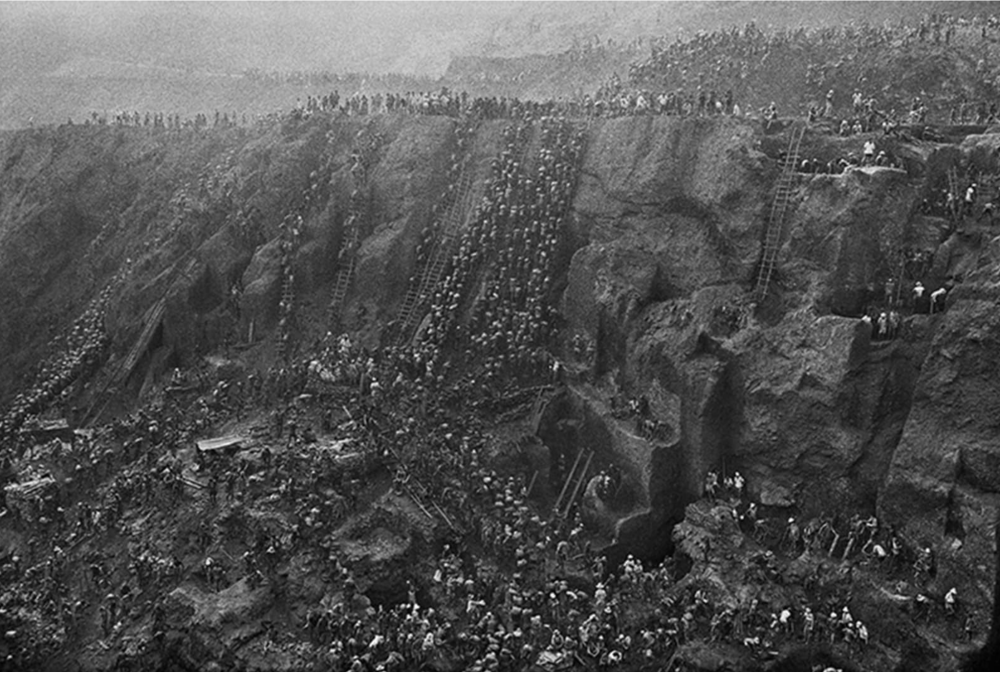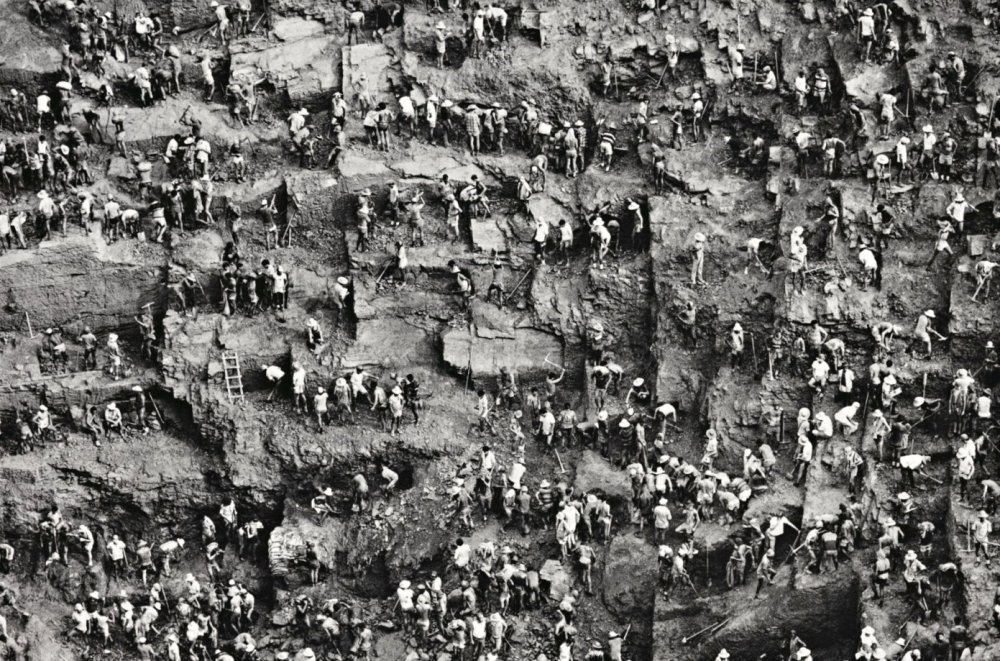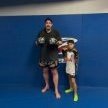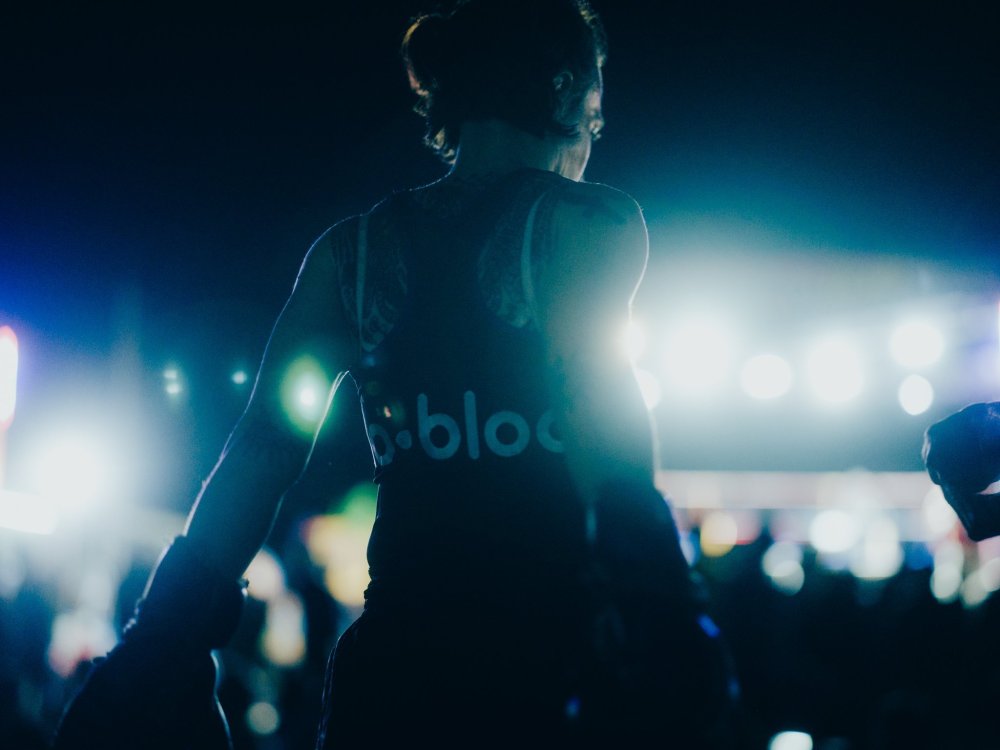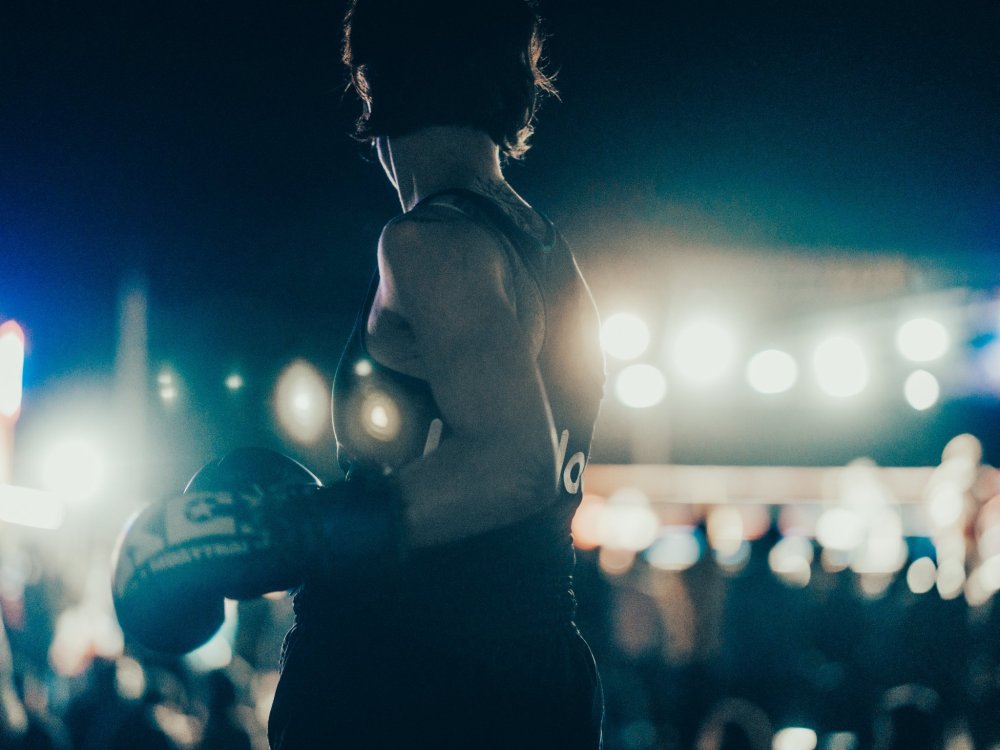Leaderboard
Popular Content
Showing content with the highest reputation since 12/26/2024 in all areas
-
Kevin — this is beautifully written and profoundly resonates with what we are trying to protect. At our gym in Pai, Thailand — led by Kru Sittiphong (Eminent Air, Bangkok) — we often find ourselves discussing this exact tension. The split you describe between aggression as war and tradition as festival maps directly onto the current shift happening in Muay Thai today, especially in the growing clash between Muay Farang and traditional Muay Femur. So many Westerners arrive here asking for two sessions a day, intense sparring, and "hard training" to burn through their fire. They believe output equals progress — but they miss that in Thai Muay Thai, form comes before fire. As Kru says, “If no one corrects your technique, you're just burning energy and money.” You can train for years and still lack timing, balance, and control if no one slows you down. He calls this rush-to-power style "Muay Farang." Not in judgment — but as a cultural observation. It’s mechanical. It’s linear. It seeks transformation through depletion, rather than refinement. It forgets the smile in the sparring ring. The mutual game. The moment when two fighters laugh and say, “You got me.” That ease is the solarity. That’s the festival. Lerdsilla, Saenchai — we show students how they move not to win but to shine. Their movement is gift, not dominance. We see this in our students too — that knife’s edge between aggression and release. Some say they want to spar to “let out the fire.” But this isn’t the Thai way. Not really. Not the artful way. Real Thai Muay Thai is not made in war. It’s made in play, in rhythm, in control, in beauty. Muay Thai was born out of community, not conquest. The rings were surrounded by farmers, not fighters. And even now, the countryside promotions like Pai Fight Night are pushing back against the gambling, the scoring controversies, the drift toward aggressive spectacle. They are preserving Muay Thai as cultural heritage — as festival, as you so eloquently say. Even the structure of Thai training reflects this longevity: one thoughtful session a day, not burnout. Recovery built in. Years spent mastering balance before layering in power. It's a slow art. A patient art. It cannot be "hacked." And it cannot be copied in systems that don't understand its roots. So yes — we’re witnessing a shift. And some, like Samart Payakaroon, are trying to protect the tradition. Others, like the Muay Femur stylist who left ONE Championship, are quietly walking away from the pressure to perform brutality over brilliance. We believe this conversation matters deeply — and must continue. Thank you for holding space for it, — Jennifer & Kru Sittiphong Sittiphong Muay Thai - Technical Muay Femur Training Pai, Thailand2 points
-
What many do not realize is that ONE has so thoroughly commandeered the social media ecosystem of Muay Thai in Thailand (quite consciously, as part of its marketing approach, absorbing trad social media accounts, controlling messaging across all platforms through various systematically means...and quite brilliantly I would say), that many, many New Gen Muay Thai fans in Thailand, who speak no English at all, now have bought 100% into the ONE Entertainment full power smash aesthetic. Demographically much of it is somewhat a new fan base for Muay Thai, but its very vocal in SoMe post comments, and has influenced the older online gen as well. What we in the West are drawn to in traditional Muay Thai is now is ardently being pushed against by a segment of Thai fandom now, even in the trad ruleset. There is a kind of tug-of-war now between the traditional values of superior fighting and the new International smash values, and hybrid promotions like RWS are kind of caught right in the middle, but seemingly for now siding with trad values for the most part. It does mean though that some trad fighters are just going to go in there and smash on trad cards, which is kind of amazing because this change has occurred in only a few short years.2 points
-
A Battle of Affects I've argued that the highly Westernized (Globalized) affect expression in ONE and other Entertainment Muay Thai, typified in the Scream face you'll see in fight posters (which sometimes ironically looks like a yawn) and in post fight celebration, expressing aggro values that work against the traditional affects of Thailand's trad Muay Thai, a fighting art that comes out of Buddhistic culture largely organized around self-control...(that's a mouthful!) is attempting to invert Muay Thai's relationship to violence itself. It is interesting that spreading in the trad circuit is this mindfulness/meditative post-fight victory pose, an example of which is here, the young fighter with his trainer. This is no small thing because arguably culture is made up of prescriptions of "how you should feel", largely expressed in idealized body language and facial expression. When you change that prescription, in fact inverting, you are challenging the main messages of culture itself. One of the gifts of Thailand's traditional Muay Thai, I have discussed, is that it provides a different affectual understanding of violence itself, which then cashes out in simply more effective fighting in the ring. Something of a gift to a world that is more and more oriented toward rage and outrage.2 points
-
above, festival fight in Pattaya Just some thoughts and observations on the overall state of Thailand's Muay Thai. Not an expert opinion, just an informed perspective. The title of this piece may sound absurd, or maybe for some just an exaggeration, but there is among some long time fans who have watched a lot of Muay Thai in Thailand the sense that the only Muay Thai worth watching in Thailand now, in terms of actual skill, is Muay Dek, the Muay Thai of Thai youth. This piece about why that may be so. There is a sense that Muay Thai has been stretched now in two directions. You have Bangkok stadia, gambling driven traditional Muay Thai, supposedly the acme of the country's traditional talent, and you have Entertainment Muay Thai (with various versions of itself), a Muay Thai that is bent towards - and in many cases just FOR - the foreigner. If I was to really generalize between the two, one line of Muay Thai heads toward more "technical" point fighting and fight management (trad stadium Muay Thai), fights where fighters and corners are always responding to shifting gambling odds, and on the other hand a Muay Thai (in the extreme case of ONE) which is all about combos, aggression and offensive risk taking, emphasizing trades in the pocket and knockouts. The problem is, neither trajectory is very skilled (at least in the historical sense of Thailand's greatly skilled fighters). Muay Thai has become increasingly deskilled, along these two trending branches. And, if you mostly watch one of the two, you might not have noticed the deskilled aspects, because this is just the "new normal", and competition always produces winners who seem in comparison to others, quite skilled. It's only when you take the wider view, not only of the history and greatness of the sport, but also of the present state of Muay Thai itself, importantly including Muay Dek, do you see the drop in skill in adult fighting...as each promotional style squeezes out certain qualities from their fighters, cutting off their full, expressive development. Even with big sidebets on fights (gambling), and seemingly lots of pressure, Muay Dek fighters fight with great freedom. Some of this is a mystery why this is lost, but what follows is a sketch of how Muay Dek fighters change and become limited once they reach a certain age. Why Are the Muay Dek Fighters the Best Muay Thai Fighters in Thailand? If you just watch a few fights, and you have an eye for it, you'll see it. In a word, freedom. In another word, expressiveness. And still an third, sanae (charm, charisma, a key component in Thai traditional scoring). The Muay Thai of the Golden Age (1980s-1997) was filled with highly skilled, very well-rounded, but importantly very expressive fighters, fighters who fought with experimentation who were constantly adjusting to their opponent, drawing on styles and tactics that could in shifts change the outcomes of fights. And in fighting in that way that exuded personality, uniqueness and charm...aura. Much of this quality, and flexibility is gone from Thailand's Muay Thai, but in today's Muay Dek some of it is really still there. Its only when these fighters get to a certain age...maybe 15-16, that it starts to become squeezed out. In the Muay Dek even of today you get fighters who are regulating their energies with great subtitle, not swinging between overt passivity or over-aggression, fighters engage more continuously in the classic style, with fewer ref breaks, less stalling, fighters drawing out extended phrasing and highly technical defensive stretches that endure. A greater variety of weapons, and even transitions between fighting styles or a shifting of tactics, to solve what is happening in the fight, a kind of cerebral aesthetic that older fighters seem to have lost the capacity for. At the highest levels of Muay Dek youth fighting you see dimensionality...and personality. There is much less nibbling at leads. Instead one sees that leads are vied for more or less continually, and expanded when achieved, without devolving into hyper-aggressive mashing. I'm going to leave Entertainment Muay Thai to the side for now, especially ONE which is its own particular excessive exaggeration, mostly because its kind of obvious how promotional hype, booking dynamics, rule-sets and bonuses shape fighters to fight in a certain more limited way. What many may not realize is that trad Muay Thai in the stadia also forces fighters to fight in a certain way, in many cases simplifying or pairing down what they had been capable of when developing as youths. I'm going to say "gambling" here, but gambling is not the boogieman monster that a lot of online commentary makes it out to be. Gambling in Muay Thai is essential to its form, in fact I don't think Thailand's Muay Thai would have reached the complexity of its art without ubiquitous gambling, all the way down to the 1,000s and 1,000s of villages and provincial fight cards, its ecosystem of fighting, which have gone on for maybe centuries. Some of the discussion of the importance of gambling I discuss speculatively here: above, festival fight in Buriram The problem isn't "gambling" per se, but rather that in the larger venues in Bangkok because of the changing (eroding) demographics of Muay Thai the shift of economic power to big gyms, and the dwindling talent pool, the powerful forces of gambling interests have lost proportion, and now have outsized impact. There are not enough counter-balancing forces to keep gambling's historically important role in Muay Thai's creativity, in check. These have worn away, leaving gambling as too prominent. But, I'm not talking about corruption here (which everyone loves to turn to with an infinite finger of blame). I'm actually talking about the way in which Muay Thai is traditionally fought with fighters responding in a live sense to the shifting odds of the audience. Online gambling has complicated this more human, social dimension of the sport, abstracting it to 1,000s or 10,000s of people of varying interests and even knowledge, on their mobile phones. The demographic of "who" gambles has changed, and increasingly people are gambling who have less knowledge about the sport. They'll place a bet on Muay Thai just as they'll place a bet on a football game. Again, let's bracket, let's put the online nature of gambling to the side, and just talk about the traditional relationship between live fighting and live in-person gambling in the stadia. The fighters are fighting TO the odds. The odds are the "score" of the fight, just like in basketball you could look up to a scoreboard and see the score of the game, in Muay Thai you can look to the odds and (roughly!) know the score of the fight. There may be distortion in the odds, whales and their factions of one sort of another may be putting their thumb on the scale, but there is a symbiotic discourse happening between live gambling and the fighters (and their corners). Some of this traditionally has produced great complexity of skills, the ability of fighters to not just "win" the fight in terms of points, but also manage the fight, in stretches, shaping narratives. But today, the exact opposite is happening. Gambling is deskilling traditional Muay Thai, in large part because the small gyms of Thailand - the gyms that actually grow all the fighters, feeding the talent of Bangkok - have been eroding. Not only have they been disappearing (there are far, far fewer of them), those that exist still have no political power in the socio-economics of the sport. When fighters of small gyms enter the gambling rings of Bangkok, not only are they doing so on a very fragile line of income, often losing money to even bring their fighters down, they can no longer bet big on their fighters to supplement fight pay. Betting on your own fighter was once an entire secondary economy which grew small gyms and encouraged them to create superior talents. If you had a top fighter he could be a big earner not only for the gym, but also all the padmen krus in it, aside from fight pay. Because small gyms have lost power overall, political power, they have to live at the margins, which means their fighters have to fight extremely conservatively so as to not be blamed if their fighter loses. They need the backing of the social circles of gamblers. If you lost, it can't be because you took a risk. And because big gyms are going to win (force through political weight) close fights, small gyms have to practically walk on egg-shells in the way that their fighters fight. Generally: get a small lead...and once you have that lead protect it at all costs. Don't do anything risky to expand the lead. And, because small leads are easily lost, fights often turn into a series of nibblings, with both fighters protecting their tiny leads, back and forth. They aren't trying to win, they are trying not to lose. This form of fighting has transmitted itself to big gyms, is the new traditional form of fighting. Don't risk blame. This aspect of "not my fault", "defend a small lead, take it to the end of the fight if you can (5th round), make it close enough and then blame politics or corruption if you lose" has become a normalized style of traditional fighting, across venues among adults. Some of this is because the current state is an out of proportion exaggeration of the truth that traditional Muay Thai fighting always has been expressive of political powers and social capital struggle in hierarchies outside of the ring. Fighters ARE part of and in the ring express social networks. This is part of Muay Thai's social dimension and cultural anchoring. It's just that with the erosion of the powers of small gyms, the dilution of the talent pool, the hoarding of limited talent, has pushed this aspect too hard, and distorted the sport, draining it of skills and its renown complexity. To give a small anecdotal example of how this deskilling works, I remember when a smallish gym was training a fighter, and in padwork the fighter switched to southpaw, just experimentally. No! The answer came back from the kru, and they related a story from the past when one of the gym's fighters had switched to southpaw in a fight and lost. The gamblers who bet on him were furious. He had "blown" the fight. The gym had lost face. From this single event, probably a fight not of much consequence, the gym now forbade switching. It could cost you a fight. An entire branch of Muay Thai (that of switching) was cut off from that gym's fighters...forever. Not only in terms of that technical branch of development, the whole spirit of experimentation and creativity was closed off. The goal was: get a lead...keep it. Don't develop a style that is complex, or varied. Don't do anything in a fight that IF you lose, the gamblers who backed you will blame you and the gym for. This is deskilling. one reason why Thai fighters have been the best in the world isn't just that they have trained and fought young. It's also that they have been at the apron of fights, watched the shape of the traditional aesthetic, socially absorbing a great deal of fight knowledge. At the rope, even as cornermen or impromtu coaches. Its not just the doing, its the participation in the Form of Life that is traditional Muay Thai, bringing a depth of IQ. As small gyms and kaimuay across the country lose power in Bangkok, social power, they have to exist in very narrow economic margins, which means that technique wise their fighters have to fight in very narrow lanes. The spontaneous and the creative is too risky, because gyms don't want to be blamed. Fighters cannot explore or develop new ways of winning fights. There is a secondary dimension in this, as the downfall of the Thai kaimuay is told, which is IF a small gym does produce a particularly strong talent, this talent will not become a resource for the gym, adding honors to the gym (championship belts, etc), growing the gym through his presence. Instead, if you produce a talent this talent will be ostensibly stolen from you. Not outright stolen, but you will be pressured to "sell" their contract to a big Bangkok gym. This pressure will usually come from the fighter's parents, who want success and fame for their son, and the esteem of a bigger name, and it will come from within the hierarchies of the sport. The sale will happen. Instead of a developed talent adding to the richness of a gym's culture and growing their talent own pool of younger fighters who want to share in the glow of gym success, instead you'll be financially compensated with a contract sale. Some money in the pocket, to the gym owner, but not the kind of verdant growth a talent would have brought in the past, something that would shine across all the krus and padmen, and younger fighters in the kaimuay. And, fighters now are being extracted from small gyms younger and younger. The comparison is fruit being picked from trees more and more less ripe. Not only are fighters in general entering the Bangkok stadia with far less experience and development in the past, fighters are also being swept up by big gyms at a much higher rate, at an earlier state of their development. The ecosystem of the small gym, 100,000s of them, is being starved out. And its that ecosystem that historically had produced so much of the foundational complexity that gave Bangkok fighting so much of its renown diversity. Fighters that entered Bangkok stadia used to be much more complex and experienced, and then once they got there the complexity and experience of that scene increased and amplified them, spurred them to greater growth. Now, its the opposite. Arriving in a Bangkok stable may very well nullify your potential. We might add to this that the large big name gym stables of Bangkok today, that have swept up much of Thailand's diminishing promising talent, concentrating it, have become more like holding houses of that talent, and fighter factories for promotions, and less like developmental houses as old Bangkok gyms like Muangsurin, Thanikul, Pinsinchai, Dejrat, Sor Ploenjit had been, promotion favorites which maintained not only a kaimuay developmental creativity, but also more lasting connection with provincial sources. Muay Dek and Facing Power So, the good news is, despite all these forces against creativity, against small gym development, Thailand is still producing very high level Thai fighters from youth. These fighters fight with complexity and freedom, full of sanae, technical excellence, narrative control, quite different than their older counterparts who have learned to strip away their individuality attempting to preserve leads in gambling's stadium Muay Thai. I'm not sure what to account for this other than to believe that Thailand in its heart still maintains the aesthetics and richness that created the acme of the sport in the Golden Age, these qualities haven't been stamped out yet...it is only when fighters get to a certain maturity, when they are fighting for gamblers without a lot of social power themselves, protecting tiny leads, that they lose these qualities. They become deskilled. There is another element to the mystery of why these Muay Dek fighters lose their skills when they age. Kru Gai at Silk tells Sylvie: It's easier to be femeu when everyone is low weight, and nobody has power. Muay Dek fighters develop all this complexity because there is no "power" consequence for their experimentation at low weights. And one can see how this makes a serious amount of intuitional sense. Gamblers today favor more "power" in Muay Thai, so femeu fighters enter contexts where suddenly there are consequences that limit what you can do. But, if you take a moment to think about it, femeu fighting youth of the Golden Age also once they hit a certain age encountered "power" in opponents. But, instead of losing their skill sets at maturity, they actually grew as fighters, became more complex, more creative, more effective...against power. Someone like Karuhat was fighting up two weight classes in the 1990s, a very femeu fighter, against very powerful opponents. It's can't be that encountering the maturation of "power" is the thing that is shutting down the development of the youth, who have already developed so much prior. In fact, there seems a rough parallel between artful youth fighters of the Golden Age and now. Both of them hit this "wall" at a certain age. But in the Golden Age this accelerated their growth, today it stunts it, and even regresses it. I suspect it has to do with the overall conservative form of stadium gambling Muay Thai, the entire incentive and punishment system that produces a lot of tiny-lead chasing...and this goes back to the dis-empowerment and erosion of the small gyms that feed the sport, developing the fighters. The best fighters in all of Thailand are the Muay Dek fighters. It is the closest thing to a natural lineage with the greatness of the past. But right now...there is no way forward for them. No way for them to allow their expressiveness of character and technique to expand and not be disciplined into submission, dulled. They have to face the trad conservative ecosystem, or have to turn to the hyper-aggression of entertainment promotions, each of which robs them of a vocabulary of control and expression.2 points
-
A lot of these thoughts of several years came together for me in side conversation with Arm of Muay Thai Testament Instagram who is looking to perhaps put together a project around Muay Dek fighters of today. I asked him if he could link some present Muay Dek fighters on the rise. This is what he wrote, posted with permission, posted in a series of replies: Strong Muay Dek Fighters Today 1. I was rewatching one kid this morning, as I do with all the kid fights that gets good reception, and this kid from some gym I've never heard of is so good femue. I think the gym is a new addition to Petchyindee's roster now. His name is Kaona Jor. Nopparat The part about Femue being easier to execute at lower weight is so true. Regarding the examples, I only really know the Petchyindee ones but here goes. In no particular order: 1. I was rewatching one kid this morning, as I do with all the kid fights that gets good reception, and this kid from some gym I've never heard of is so good femue. I think the gym is a new addition to Petchyindee's roster now. His name is Kaona Jor. Nopparat2 points
-
This perspective is related to our manifesto of values and a priority on provincial fighting in Thailand.2 points
-
The first fight between Poot Lorlek and Posai Sittiboonlert was recently uploaded to youtube. Posai is one of the earliest great Muay Khao fighters and influential to Dieselnoi, but there's very little footage of him. Poot is one of the GOATs and one of Posai's best wins, it's really cool to see how Posai's style looked against another elite fighter.2 points
-
The championship fight was such a perfect illustration of "basics make champions." Not fancy, not showy, just incredibly solid foundations.2 points
-
This was their fight back in August, where Marie pulled out the upset. I believe Marie was a last minute replacement in that fight. Useful to compare the fights.2 points
-
This was just a really wonderful performance by Barbara, on so many levels, for the RWS Raja belt. You could feel her training in her fight, the way she stays within herself, at surface a very basic approach in terms of weapons/style, but underneath it all is a very important thing that not a lot of Westerns understand. You fight WITH Space. And she persistently denies Marie the space she wants, it ends up blowing up the fight, especially because she brought with her a beautiful very deep, head-sink clinch lock that Marie had no answer at all for (and that Raja let her work from, thank goodness). I have to watch the 2024 fight where Marie upset her in the clinch, but in this one Barbara was loaded for bear. This is the same recipe Sylvie used to beat so many, especially bigger opponents. You fight the Space, not the opponent. And you fight your fight with the belief "If I fight my fight, my way, the right way, you are going to have a very difficult time". I also loved Barbara's 20% - 40% power hands, just using them to touch and semi-pop Marie, to stress the space. No mindless, 100% power combos, actually seeing one's way in the space, and touching the opponent. This is just glorious controlled dern Muay Thai. Barbara's lock was so pure, so good - with a very deep head sink. She also had something that a lot of locking fighters fail to do. Once locked you walk your opponent. Not only do you pivot, or pull, you drag and also literally walk them so that their feet cannot set, so you tangle them, breaking the line of counter control. This is advanced, developed stuff and great to see. A lot of Thai stadium fighters of today don't even do this, its part of the eroding art of clinch. She also was very aware to drag Marie off the ropes so the ref break doesn't come and she could paint longer pictures of her lock dominance. Small touch with big awareness and effect. I don't really understand why Marie decided to fight this fight as a pure femeu fighter, back to the rope. I have to watch their first fight, but this plays exactly into Barbara's closing style. I imagine this is something trainers have been moving her toward? I'm not sure. A very cool, very worthy victory.2 points
-
You could just pick a high-level gym in a European city, just live and train there for however long you want (a month?). Lots of gyms have morning and evening classes.2 points
-
Muay Khao in Padwork - note a little bit advanced stuff Talking a little more about Muay Khao training (and padwork), beyond some basic things like the padman doing rounds of "latched on" work where you trailer hitch and continuously knee or work into knees, there is a shape to Muay Khao that involves building up the fatigue in your opponent, which involves continuous pressuring and tempoing early on, nothing rushed, importantly with the mentality of depositing fatigue. Even if you don't have a padman aware of this, you can do this on your own, of your own device. People do not think much of manipulating or effecting your padman, but taking cue from David Goggins trying to mentally break his SEAL Team trainers, you can use your padman's energy managements to become aware of their fatigue, tempoing up or displacing them when they start to manage. This builds up your own sense of perception, becoming acutely aware of its signs, and developing responses, things that will serve you well in fights. This doesn't mean going HARD, like 200%. It means managing your own fatigue while you work that edge and tax your padman. The purpose of this is to slow reaction times and decision quality in later rounds in fights. You don't win fights early in Muay Khao work, you prepare the material so you can work late. A great padman will see and help you train this shape of the rounds, even as they manage their own fatigue. It goes without saying this involves not just "following along" with called strikes, which I believe is detrimental on a deeper level, because what you are training in those cases is "being dictated to". Lots of fighters have this problem, they have spent countless hours of (unconsciously) learning to be steered, so when their opponent looks to dictate timing, space or rhythm they have years of being comfortable being dictated to. This though is a subtle line to walk, and it depends a great deal on the experience of the fighter and the quality of the padman. Ideally, you want padwork to gravitate towards a dialogue, a back and forth, which mirrors the dialogue of fighting, accepting dictated tempos and spacing, modifying them, shaping them in return. Good padmen (who aren't just burning you out with kicks or holding combos over and over, largely ex-experienced fighters) will recognize this dialogue dimension, and you'll bring out more of their "fighter energy" and creativity, which is Golden stuff. Lesser experienced padman, or padmen who are just grinding, may not respond well, but you want to get into that zone of your 5 rounds being shaped like a fight...and for a Muay Khao fighter that means depositing fatigue in your padman early, if you can. Even if you can't, the aim of recognizing stalls, energy management, gatherings, and working on them yourself (not being passive) is a perceptual skill set you want to develop. For Muay Khao fighters though, you want to get to that clinch, or those finishing frames in the later rounds. You have to feel those angles of dominance, the cherry of what you built in previous rounds. Great padman know this, and develop pathways later where your body can sense, can experience those finishing elements. Femeu fighters, other style fighters, have other shapes in their fights. This is specific to Muay Khao.2 points
-
I've recently been contacted by the head of a small gym in Samut Prakan (below Bangkok). The gym is small, mostly kids, but he's inviting westerners (both female/male) to come train with him and fight out of his gym. If you are in Thailand and wanting an experience of a local, small gym that isn't geared toward commercial training, maybe give this a try. No English, so just use a translator on your phone. Contact on FB: https://www.facebook.com/profile.php?id=61571372517312&mibextid=ZbWKwL https://maps.app.goo.gl/ELoJohV8qcGSSydd62 points
-
For anyone who follows my writings I do not argue for any sense of a "pure" Muay Thai, or even Siamese fighting art history. Quite different than such I take one of Siam and Thai strengths is just how integrative they have been over centuries of development (while, importantly, preserving its core identity). For instance Western Boxing has had a powerful influence upon the form and development of Muay Thai for well over 100 years, and helped make it perhaps the premiere ring fighting art in the world, but Western Boxing itself was a very deep, complexly developed art which mapped quite well upon traditional Muay Thai in many areas, allowing it to flourish. This is quite different than the de-skilling that is happening in the sport right now, where instead the sport is being turned towards a less-skilled development, for really commercial reasons. The story of whether the influx of attention, branding, not to mention the very important monetary investment that Entertainment Muay Thai has brought will actually help "save" traditional Muay Thai is yet to be written. It very well might, as the sport was reaching some important demographic and cultural dead-ends, and it needed an infusion. But, let's not have it be lost, what itself is being lost, which is the actual very high level of skill Thailand had produced...and how it had developed it. Let's keep our eye on the de-skilling.1 point
-
Recently really feeling the pain of the reality that Muay Thai is washing away. There are just waves and waves of shallow commentary and sharing, content hypes, and mostly just an incredible forgetfulness in our highly digitized culture of imitation and wasting. Do think we have done something with the Muay Thai Library documentation, and are doing something. It's an edifice, a seed bank of knowledge, but I honestly don't even know if what it is will last even 10 years from now, as the sport careers off into the service of the Westerner. Do people not even know that they changed all the rules to let you win???? And that Thailand itself is no longer producing the same highly skilled, deeply founded fighters? Today just bummed by it all. Definitely Benjamin's Angel of History bending down, grasping at windblown scraps. All I can comfort myself is with the fact that Thailand's Muay Thai has been incredibly resistant and resilient to incursion and outside influence, for centuries really. And it will last through this. But, we have Karuhat today sleeping in the extra bedroom, his knee recovering from ACL reconstruction, maybe with ten years of free movement left in the joint, and my heart is breaking because he is the GOAT in his own way, and people just aren't going to know him. And there are layers and layers of such memory, and capacity.1 point
-
Never sure about provenance, but below is a photograph marked as a Funeral Fight for Marupongsiripat (1898). This custom reaches back well over 100 years, and to Thai royalty. The establishment of the 3 Schools of Muay Boran (just before the decade when Muay Thai would be modernized on the model of British Boxing) also occurred through funeral matches.1 point
-
The crazy thing about Namkabuan's 130 lb run at Lumpinee is that he told us that he was forced out of the 126 lb class because of his brother Namphon, so he went undefeated at 130 lbs instead (5 defenses). At 126 he would have been unfightable. In those years he was undefeated by Matee, Therdikiat and Jongsanan and Chatchai. Therdkiat himself was adopted into his gym. by the end of his run at 130 lbs he was giving up 10 lbs to Sakmongkol he was so unbeatable fighting up. The Lumpinee belts going off at 126 lbs during Namkabuan's 130 lb run.1 point
-
The TAT in Thailand put forth its huge marketing strategy for tourism investment, detailing a budget of about $140,000,000 USD, but notably Muay Thai is almost entirely absent of mention (other than the large scale Wai Kru Ceremony which I believe is aligned with the Amazing Muay Thai campaign. read it here: https://www.tatnews.org/2025/07/thailand-launches-the-new-thailand-vision-to-redefine-tourism-in-2026/ Most notably is ONE's absence, especially in the list of the kinds of international sport events that its trying to be included in, "...marquee events such as the Amazing Thailand Marathon 2025, the 33rd SEA Games, and Honda LPGA Thailand will reinforce Thailand’s status as a premier sport tourism hub" A lot of ONE's argument has been how it is radically separated itself out from Thailand's Muay Thai, as part of a larger internationalist sport and martial art entity, in a way that traditional stadium Muay Thai is not. Instead it seems that the overall strategy of the TAT - which I was pretty impressed with, especially went it got down into the segmentations in the lower half of the article - has turned against the very exaggerative metrics that ONE likes to generate and turn to. It wants more meaningful tourism experiences, culturally and locally defined, anchors of attachment, not pushing big numbers which can vacillate and change at the drop of a hat or an investment rate. This is one of the problems with chasing the algorithm and turning traditional Muay Thai into a digital content (knockout) machine. You just become another piece of entertainment whose attention can slosh towards you or radically away from you. The TAT seems to see these and has turned against just number chasing. The kinds of values being put forth actually seem to mirror some of traditional Muay Thai's greatest strengths, the way it is culturally bound, locally defined and experienced, sewing itself into the very fabric and geography of the country. While Rajadamnern's efforts at Entertainment transformation also are not included, it and traditional Muay Thai in general, seems much better positioned to enter into the kinds of expenditures and themes the TAT is taking on. Thailand wants meaningful experiences, cultural attachment and identity, uniqueness, impassioned connection (not social media arguments and memes), it wants travelers who will return and return, who will spend lengthy time, this is traditional Muay Thai, and the Muay Thai of Kaimuay Culture.1 point
-
1 point
-
1 point
-
Note to self...want to write of the female fighter as axis mundi, the christological (in Simone Weil sense of bridging sacrifice) pinning of the body down the in the turpitude of struggle, eliciting the sparks of the divine. Soliciting the female as artist, who builds the ladder to Heaven of oneself. see Possession (1981). What do I mean by this? Some of it is in relationship to my overall theory of ring fighting in Thailand as a rite, and I think my short film was tapping into this intuition:1 point
-
[someone posting that students shouldn't be allowed to spar without 6 months in Foundations Class] Not to respond too directly to the above statement, more to just this kind of advisement which is maybe common, but it just shows how far trad Muay Thai development was from today's class centric, out of Thailand (but probably in some parts of Thailand too) is. They are just two very different worlds and practices. Sparring, especially as it seems it was in the Golden Age...was part of foundations. Yes, there was a lot of grueling bag work or shadow boxing, but sparring playfully in space was part of young fighter development. It's not this extreme, but its a bit like saying you shouldn't get on a surf board until you have the fundamentals down for many months. The point was to assemble fundamentals in relationship to others. And, I certainly understand there are huge differences between these worlds, Westerners spar with different intents. It's only to point out that what Thais traditionally achieved was through very different sensibilities over what Muay Thai even was. It much more than this, I hope to finish an article on how trad Muay Thai is developed as social rite of passage way-of-life development, but at minimum there is a huge difference in concept in how skills should be acquired.1 point
-
Because I've mostly studied the Golden Age of Muay Thai and after I'm often of the opinion that "Muay Thai doesn't have combinations"...and this is often true. The use of punches are much more vision driven and creative, and at times very good boxers like Somrak won't even be throwing punches, but will be using boxing's footwork or angle taking. But...if you go back to the 1970s many Muay Thai fighters did use boxing combinations to great effect, perhaps no fighter more than the great Wichannoi who punches with speed and power along a grammar of combination fighting. In fact after watching all his fights last night I think one could say that his entire style is organized around his close range combination Muay Maat attack. It's very clear how important they are to him. Last night I also put this brief edit of a 2-5-2 knockout combination that Saensak used to knockout Wichannoi, which is just electric. It really works because Saensak has a thunderous left that Wichannoi is very wary of and has to commit to shut down. But, in the story of boxing's influence on Thailand's Muay Thai that goes back to at least the 1920s, it does seem that there was a qualitative change between the 1970s, then the 1980s, then the 1990s. It's almost as if Western Boxing was digested by Muay Thai, and its influence became more and more diffused, affecting more and more elements, but also less standing out stylistically through combinations. Golden Age punching styles took on their own unique character, through a widespread integration. One of the interesting things is that because Thailand is becoming combination oriented in its training, with the influence of Westerners and the rise of Entertainment Muay Thai, the Silver Age with its much more distinct combination fighting may be a better touchstone than Golden Age excellence. And Wichannoi in particular perhaps.1 point
-
One of the effects of deteriorating defense in Muay Thai is that sub-optimal offenses will become more effective. Which is to say, they will no longer appear sub-optimal (based on flawed principles). The lack of eyes, or distance control, or sound principles on defense will elevate certain offensive trends which would never fly in the past...one of the subtle ways deskilling is happening. Basic combo-ing sudden is proven effective. Blind pocket trading, effective. Spamming elbows, effective. And with that effectiveness the loss of skill.1 point
-
Saenchai with another KO win on Entertainment Thai Fight. He's the last magical fighter of Thailand, that last of Thailand's greatness, and we are all blessed as he continues in the ring. I don't watch it much (or any of Thai Fight), but still consider it a blessing. When he stops it will all be gone, even though this is kind of half-fighting, and surely he'll do show fights after his retirement. What I love about this photo - and the first thing is that it suddenly feels like Saenchai has aged, and this happens - but what I love about this photo is that you can see his "coal eyes", which is what I call them. There was an old trainer at Lanna named Nok, who when you trained with him his eyes, if you got any advantage or edge, would just turn black. You could see, he just went into that state. And you knew, stop fucking around. Saenchai has always had such a joyful, playful visage, and a charm of handsomeness that he carried everywhere, even into intense battles. But every great, experienced fighter, even Saenchai, has "coal eyes" inside of him, they have to or they couldn't do it the way that they have. And, in my poetic view, it feels like in this slightly aged photo you can see his coal eyes come out. And its really beautiful.1 point
-
Heard backstage at a trad promotion in Bangkok, Dieselnoi loudly complaining that Thais don't know how to knee anymore, nobody even knees to hurt. Just kneeing for show and points. *This isn't a question of intensity (how hard), its one of technique, and continuity. The knee techniques of Hapalang gym have just been largely lost.1 point
-
Thats so upsetting. Whats worse is that its a conscious action for them to have go about fighting like this. While for lots of us in the states or Europe where fighting is just like this anyway its just how you do it, we dont even make the conscious action of how much power you're putting into something, what follows after, and our own composure. It shifts energy away from ones self which is why it seems to muster up so much of the ego in the first place. Self attachment through the reaction of others and the materiality of power is really self degradation.1 point
-
Not to make a religious point, but rather a cultural one, this picture of "Buakieow" Jalili Barnes in victory is also an interesting instance of cross-cultural expression and value ideal. Jalill I believe is a fundamentalist Christian of some kind (sorry to be vague, it's only something I have cursory knowledge of, and I'm not sure how these denominations refer to themselves) and is known for his adherence to a much more "traditional" Muay Thai path as a farang, mostly shunning entertainment Muay Thai promotion and instead testing his metal in the trad stadium circuit. He just fought for, but did not yet attain the Omnoi belt. Muay Thai itself, in Thailand is cross-cultural, or mixed cultural on the religious front as the South features prominent Muslim fighters through out much of Thailand's history, and who have signaled their faith in the ring ceremonially.1 point
-
What many do not appreciate is that much of Thailand's traditional Muay Thai is really a Shield and Sword style of fighting, because of its inherent priority of defense. Offense largely is built off of the dexterous use of "shield". Entertainment Muay Thai is essentially turning to Muay Thai's Shield and Sword and saying: "Hey, fight without a Shield!"...but still make it "Muay Thai". You can't really. It's Shield and Sword.1 point
-
The Deskilling of Muay Thai Through Combo-Fighting Discussing again the deskilling of Muay Thai in the ONE promotion (and to a lessor degree, other Entertainment forms of Muay Thai): To be quite broad about it ONE is just bite-down combo fighting turned into a sport so larger bodied, less-skilled farang can win endless pocket trading (which is seriously up regulated by bonuses and hidden penalties), so the (new, invented) sport can be promoted to non-Thais. It has nothing to do with the history of Muay Thai. It has to do with trying to create a product that will sell through Knockout highlights on Instagram. It also has almost nothing to do with Boxing. The impression it does is just the rather vast conflation thinking "combos" = Boxing. It, in my opinion, is contributing to the accelerated deskilling of the art and sport, rather than introducing important new skills, or returning it to past sophistication. Boxing is NOT "combos". 3 Zones of Fighting Here is a graphic to help explain: Over-simplistically there are 3 Zones of Fighting: ONE has effectively removed the importance of 2 of the 3 zones (because they take the most skill development, and Thais have been much better at those 2 down regulated zones). This is a deskilling of the sport: And, in the zone that remains (Zone 2), by removing defensive distance taking (the Thai emphasis on retreat and counter-fighting, and clinch, the traditional counter to a hands-heavy striker) they have made Zone 2 a haven for bite-down combo fighting (and NOT Boxing proper). That is to say, you can succeed by combo-ing through this zone, especially if you are larger bodied. On the other hand, if you look at the top graphic with all Three Zones, you can see how Boxing proficiency connects up, or fills in the high level development of zones 1 and 2 in Muay Thai. When all three Zones are in play bite-down comboing through the pocket doesn't actually do this, because it lacks the timing, vision and control over position that Muay Thai deploys in Zones 1 and 2. Boxing, on the other hand, because its so highly developed as a mid-distance art developed over centuries really, like Muay Thai, adds great complexity to the management of the 3 zones. A Historical Example: If you want to see what combo-ing does against a 3 Zone fighter the classic example would be Ramon Dekkers vs the 19 year old Sakmongkol: Sakmongkol simply refused to trade in Zone 2 and completely controlled Dekkers. ONE is basically the complete inversion of the Dekkers vs Sakmongkol fight. It removes Zones 1 & 3, and ostensibly would have forced Sakmongkol to trade with Dekkers, if we reimagine it. Eventually Sakmongkol, if he was forced to trade would have probably gotten caught...but not because Dekkers was a high level "boxer". It's because he combos through Zone 2, and the traditional control of that kind of fighter is dominating Zones 1 and 3. This is why Dekkers struggled when fighting Thais in Thailand, despite usually having a pronounced weight advantage. ONE is basically a "reversal" of the imagined injustice Dekkers losing to Sakmongkol and so many other Thais, changing all the rules to down regulate everything the Thais did better than anyone else in the world. But, this has nothing really to do with Boxing. Thailand was plentiful with Muay Thai fighters who were better actual Boxers than Ramon Dekkers. It has to do with the role of combo-fighting. asked to "define Boxing" (ie, its not "combo fighting): It's pretty hard to define a sport or art in a few sentences - or even paragraphs! - but what I would say is that Boxing has always been a sort of parallel in principle to Thailand's "Muay Thai", if you could somehow extract all the Boxing influence (which you can't). This is to say that "Muay Thai" excels at controlling the fighting space that lies outside of the boxing "pocket", through timing, the capacities of strikes to relate to each other at that increased distance (improvisationally), and very importantly, through defense. Boxing (abstracted) compliments this with a priority over the control of the space of the pocket, through the same. And, Muay Thai clinch then takes back over at the closest proximity, as a stand up grappling art (though Boxing too has its own lineages of very close-pressed fighting and even grappling). Training bite-down combos is really the opposite of all of this. It's just firing of memorized movement patterns and using them to blast or chop through the fight space. Combo fighting is not about controlling space at all, but rather dealing with the fact that you can't control it.1 point
-
Honestly, I'm watching Karuhat reconstruct his movement heritage as he is gaining more capacity in his ACL'd up knee (3 weeks now maybe), and sometime shadows just the gesture of his right kick, lancing forward on his left, recovering knee, and he laughs,, because he knows that this little movement, this little lance, is like nobody else in the world. It's incredible. This micro movement, not even healthy, and he's already expressing in himself something nobody else can reach. and...he's standing in my livingroom.1 point
-
I remember - I've probably written it somewhere else - driving to Phetjeejaa's family gym, which was up a few lanes and a dirt road, when she was the best female Muay Thai fighter in the world, at only 13 years of age, something we did everyday so Sylvie could train with her. And to get there we motorbiked up Khao Talo road, a pretty active road, and would pass by a Taekwondo studio with a large plate glass window showing the training mat inside, where numerous kids around Phetjeejaa's age all glowed in their starched white Gis, Ha-ai-ing in their moves. And I thought to myself...we are driving to where the best female fighter in the world trains and all these kids, the parents of these kids, don't even know she's there...up the road. And even if they did, they wouldn't train with her at her gym, because Muay Thai is low class, its dirty, nothing like the promise of a clean white Gi. The story of Muay Thai cannot be told without this strong division of class.1 point
-
As Thailand's Muay Thai Turns Itself Toward the Westerner more and more, people are going to yearn for "authentic" Muay Thai This is one of the great ironic consequences of Thailand attempting to change its Muay Thai into a Western-oriented sport, not only changing the rules of its fights for them, and their presentation, but also changing the training, the very "form" of Muay Thai itself...this is going to increase the demand and desire for "authentic" Muay Thai. Yes, increasing numbers of people will be drawn to the made-for-me Muay Thai, because that's a wide-lane highway...but of those numbers a small subset is going to more intensely feel: Nope, that stuff is not for me. In this counterintuitive way, tourism and soft power which is radically altering Muay Thai, it also is creating a foreign desire for the very thing that is being altered and lost. The traveler, in the sense of the person who wants to get away from themselves, their culture, the things they already know, to find what is different than them, is going to be drawn to what hasn't been shaped for them. This is complicated though, because this is also linked to a romanticization, and exoticization sometimes which can be problematic, and because this then pushes the tourism (first as "adventure tourism") halo out further and further, eventually commodifying, altering more of what "isn't shaped for them". This is the great contradiction. There has to be interest and value in preserving what has been, but then if that interest is grown in the foreigner, this will lead to more alteration...especially if there is a power imbalance. So we walk a fine line in valuing that which is not-like-us. What is hopeful and interesting is that Thailand, and Siam before it, has spent centuries absorbing the shaping powers of foreign trade, even intense colonization, and its culture has developed great resistance to these constant interactions. It, and therefore Muay Thai itself, arguably has woven into itself the capacity to hold its character when when pressed. This is really what probably makes Thailand's Muay Thai so special, so unique in the world...the way it has survived as not only some kind of martial antecedent from centuries ago (under the influence of many international fighting influences), but also how it negotiated the full 100 years of "modernity" in the 20th century, including decades and decades in dialogue with Western Boxing (first from the British, then from America). The only really worrisome aspect of this latest colonization, if we can call it that, is that the imposing forces brought to Muay Thai through globalization are not those of a complex fighting art, developed through its own its own lineage in foreign lands. It's that mostly what is shaping Muay Thai now is a very pale version of itself, a Muay Thai that was imitated by the Japanese in the 1970s, in a new made up sport "Kickboxing", which bent back through Europe in the 1980s, and now is finding its way back to Thailand, fueled by Western and international interest. Thailand's Muay Thai is facing being shaped by a shadow of itself, an echo, a devolvment of skills and meaningfulness. On trusts though that it can absorb this and move on. some of the history of Japanese Kickboxing:1 point
-
This kid was on like a 17 fight winning streak after winning this fight from behind. Lost the streak now though1 point
-
I'm not sure where Fani Peloumpi trains nowadays - might be that she still gives privates at MTA academy which is quite central. I would contact her on facebook, as we did. We enjoyed our privates with her. Luckily, in my experience in Thailand, the pads are held by Thai trainers who have control and no need to use strength to show off, so my main worry would be rather to avoid touristy gyms near where half the people training there are mainly concerned with getting the right shots for their social media. If you stay for one month, i would try out different gyms and see which fits best. Getting different experiences and approaches would be a plus, in my opinion, and Bangkok is like a candy store in that regard. Add to that a few privates e.g. with Namsaknoi, or any trainers at established gyms such as Sasiprapa, Petchyindee, Kaewsamrit, Eminent Air, Luktupfah.1 point
-
Think of the highest level of Muay Thai fighting 30 years ago, in the Golden Age, in terms of Dynamic Range, as its applied to photography or sound recording. Fighters were able to perform skillfully at an intense range of distances. It wasn't just a matter of styles, it was that every distance was within the spectrum of competence or even excellence. With the advent of Entertainment Muay Thai, as Thailand seeks to fashion its sport towards the less skillful foreigner, the real aim is to reduce the dynamic range of fighting to only "the pocket" as much as possible, to generate clashes, because that's where memorized combinations favored by Western and other nationalities are the most effective, and that is where large bodied fighters will win exchanges. The entire spectrum, the Dynamic Range of fighting is to be shrunk. And the ranges were Thais especially held court, too-far (counter kicking defense) and too-close (clinch dominance) have been clipped out.1 point
-
We were up in Khorat last night, 9 hours of driving round trip, just to see two quick fights (maybe 20 minutes), and it was totally worth it. After watching Rambaa's festival fight card the night before. #muayThai There was something about spending the hours standing in the crowds til 11 pm in Pattaya, to watch the temple fights, and then the next day to drive out to Khorat to see these little daughters fight, the overall keeping of the flame of the birth of Muay Thai, attending to that, that filled us with meaning. It's like you are watching Muay Thai's heartbeat, when you watch the Muay that isn't made for export, and you see it living and breathing in families, in heritage...in this case from Khaosai Galaxy (famed as a boxer) now in his 60s, now in his little daughters.1 point
-
Instinct and the Thai Principle of Tammachat (ธรรมชาติ) an expansion upon my journal entry This will remain somewhat obscure, as it's hard to fill the gap in my recent reading, but thoughts on the nature of Tammachat (natural), which is one of the more essential, basic yet obscured qualities of Thailand's Muay Thai - and one that non-Thais most deeply struggle with. How can something be "natural", which is trained? They seem a contradiction, or at the very least in strong tension. Into the gap Westerners try to place concepts like "muscle memory", as if you can create a new causal chain, a new "memory" in your body which then operates with something like "naturalness". This supposed manufactured "muscle memory" is often trained with great tension - a very high degree of unrelaxed, biomechanically precise constant correction. It does not really solve the problem of Tammachat, and instead inserts a mechanical bridge between between what I'll call Instinct and Thought. I'm drawing from these two passages in the excellent book Deleuze and the Unconscious (2007, Christian Kerslake), (see them at the bottom of this post), discussing the influence of the philosopher Bergson. Bergson is concerned with how matter and memory work together. In a certain sense we all have a powerful inheritance of memory, something which includes not all of our conscious experiences, but all of our experiences, much of it unconscious. This is not just things that we can recall to our mind, but rather the very large raft of causes well below the threshold of our awareness, including our biological instincts. Instincts are wisdom, skills, reactions, frames of perception which have been developed through not only 10,000 years of ancestry, but also 100s of millions years of life itself, well below our species. All of this is inherited, in a way, in "memory", the form of the matter of which we are made. When "memory" is acting, this by default is read as "natural". If someone fakes a punch and we flinch...this is natural. It is speaking from our memory. It flows, seemingly, without thought. But Thailand's Muay Thai has a concept of developed naturalness, which is to say the qualities of physical expression which also can flow with the ease that memory has. The temptation is to create "new memories" (that's why "muscle memory") is a thing. If we can train and cram-down memories back into our causal shoot, far enough in, then they too might come out some what "natural" in the future. You see a great deal of this in the proliferation of the "combo", a fixed pattern of strike that is trained over and over again, trying to force it back down into the causal chain, so it can come out "natural"...though it almost always, when trained like this, comes out "forced" and far from Thai Tammachat. The reason for this failing is identified in the passages below (though, this is just a note, and the passages themselves may be hard to decipher, I'm drawing out a line of their thought). The point or idea is not to create new memory, or new instincts (they will never be as strong as those inherited by the instincts of biology, or of those learned deep in our forgettable pasts), its to put Instinct itself in relationship with Thought (or, in the text Intelligence). The ideal state, the Tammachat state, is one in which Instinct and Thought alternate and affect each other. Not only does Thought shape Instinct, Instinct shapes Thought. In some sense the great history of our Being, our personal Unconscious (all things experienced, most of it well below our threshold of awareness) and our collective biological Instincts, all the causes of how we act, is placed in communication with Thoughts, Intelligence, Ideas, in the sense that there is dialogue and mutuality, and no priority of either. In "flow states", presumability, this communication becomes utterly suffused. This is why "play" plays such an important part of Thai training and development, it approximates in a low stakes way this suffusion. * in what follows below I'll take a basic framework of 3 intensifications in kaimuay training: speed (which maybe the speed of a sparring opponent, a padman, or even the speed on the bag or drills); fatigue (the ways in which exhaustion creates spaces into which the mind-cannot-follow); and dominance (which may be the agonistic dominance of someone in sparring or clinch, the dominance of a high level padman, or the dominance of traditional culture & hierarchy. There are many more kinds or sources of intensification - for the Westerner of course a very large source is simply being in another culture, amid its customs and a language you do not know - but just for the illustrative purposes of the framework, these are the three. Aesthetics and Thought The role of Intensification. In the philosophy of Deleuze (and Deleuze and Guattari) there is emphasis on speeds. The exposure to speeds (sometimes in an absolute sense, sometimes in terms of changes in speeds) produces an intensification within oneself. Something that is too fast, but also something that is too slow...intensifies. In this framework I'll position this as that-which-challenges-thought, or that-which-is-where-thought-cannot-follow. This is to say, using Intelligence to keep track, plan and react is no longer sufficient. Intensification is what puts Thought in relationship with Instinct. (And keep in mind, here Instinct isn't just animal reactiviness, though it includes that too. It is the sum of our Unconscious causations.) Intensifications produce a dialogue. Muay Thai active training, aside from drills and conditioning, is thought of as "getting used to" certain speeds and intensifications, things that would just throw you into pure instinctive reactions if you were untrained. But, it is much more than that. The "getting used to" is not just exposure therapy, it is actually putting Thought and Instinct into communication with each other, by degrees. You want both dimensions, otherwise you will never receive Tammachat. This is how Thai aesthetics - to which a non-Thai must submit and be shaped by - work to sew together these two aspects of our Being. The over-arching picture of what the art of Muay Thai is, is what allows the space in which Instinct and Thought can develop together in unanticipated, experimental ways. Each must shape each...within the Aesthetic, held together by the Aesthetic. The use of intensification - there are many aspects of intensification, but we can stay with solely the quality of speeds - is to unseat Thought and place it into community with Instinct (your Past). If the intensification is too strong Thought will be forced completely down into Instinct, too light and it will operate over Instinct. The key to Tammachat is that they suffuse, the "wisdom" of each in combination. This is why Thailand's traditional Muay Thai, its very high level of command over the fight space, is an art. Fighters develop within a sphere of progressive, integrating, creative intensifications, and the fight is conducted at the level of a Tammachat suffusion of Thought and Instinct. This is what the great legendary fighters of Thailand's past exude an extraordinary degree of being "at ease", which is why they are so "natural" in their speeds and relations. One is not simply "getting used to" speeds and intensifications. Your Past (the full causal panoply of what you are, reaching much further back than even your person, into what you are as an organism) is being synthesized into an Aesthetic, a certain kind of creative completion, or some variation thereof. The Role of "Technique" Techniques are not bio-mechanically pure modularities, any more than words in a language are distinguished by perfectly performed phonemes. Techniques, which each contain their own intensity, shape, duration (duree). You cannot train techniques by rote to bury them into your past, hoping that they will come out in a kind of blind apparition that is Tammachat. Techniques are like words given to you to actively use, to express yourself within the social space (the fight space), as you encounter intensifications (speeds) that unseat thought. It is the use of techniques, as a kind of language, to weave Instinct and Intelligence (Thought) together. They perform a kind of active armature of expression, which of which holds its own intensification, just like poets let us know that words do. Do not get lost in techniques. The appeal of Thai techniques to the West and other non-Thai centers of fighting is clear. It is the most modular "piece" of the fighting Art of Muay Thai that can be exported outside of its art, like borrowing words of another language. Techniques yield to bio-mechanical reproduction, they can be analyzed by Western sensibilities and translated into angles of force and body position, accelerated by video replications and study. They can be and "are" extracted...but as extracted become nearly useless in the pursuit of Tammachat, the synthesis of Instinct and Thought. They instead operate, usually, with a jarring abutment of Instinct and Intelligence, expressing a mechanical repetition, amid exposures to intensifications of speeds which unseat Thought, often placing Instinct and Execution of technique in a kind of war or struggle of expression. No matter how much one trains technique and practices by rote repeated patterns of striking, one can not reach Tammachat. What is Intensification? The Relationship to Speeds (detour) a small sidestep to Tarkovsky to draw in a thoughts on how kinds of Time are stitched together. This will be helpful later, in a comprehensive picture of how Time operates in traditional Muay Thai, both in training and performance. Understand that the argued aim of a high level fighter is to link "time-pressures" together, just as a filmmaker like Tarkovsky does. To build aesthetic continuity (which the Thais of fighters call "Doh"). The great Russian filmmaker Tarkovsky in his book Sculpting In Time wrote about his philosophy of editing shots together. Known for his dreamlike cinema, this concept of intensification in alternation is key to the way in which he places Thought in relationship to Instinct (our collective Past). He has compared the linking of shots together as to connecting pipes together of various diameters, differing pressures, through which water flows. A shots pressure builds up slowly, then he cuts. His art is about alternating and working through various pressures. Some quotes from his writing: The distinctive time running through the shots makes the rhythm...rhythm is not determined by the length of the edited pieces, but by the pressure of the time that runs through them Rhythm in cinema is conveyed by the life of the object visibly recorded in the frame. Just as from the quivering of a reed you can tell what sort of current, what pressure there is in a river, in the same way we know the movement of time from the flow of the life-process reproduced in the shot Editing brings together shots which are already filled with time, and organises the unified, living structure inherent in the film; and the time that pulsates through the blood vessels of the film, making it alive, is of a varying rhythmic press reading deeper into theory: Time and the Film Aesthetics of Andrei Tarkovsky, Donato Totaro, A Deleuzian Analysis of Tarkovsky’s Theory of Time-Pressure, Part 1. This is to say, Tarkovsky in his cinema Art makes use of the same unseating qualities of speeds (changes in intensity), which unseat the priority of Thinking, that Muay Thai training (and fighting) does. The highest level Golden Age Muay Thai artist is displaying speed/intensity changes expressively, in Tammachat, in the same sense that Tarkovsky is in his films, producing a dream-like synthesis of Thought and Instinct. It is dream-like because it overcomes the fundamental tension between Thought (directed, intelligent action) and Instinct (one's Past causal treasure trove), allowing each to communicate to the other. The qualitative Flow State. One does not "bite down" on technique when exposed to intensifications (speeds, but there are many others) which give rise to Instinct. Instead, one turns oneself over to the Aesthetic of Muay, and searches for "words" to integrate oneself, within Instinct, within Thought. Seeking the line of Tammachat. In this sense, ring Muay Thai could be regarded as a proto-form of cinema. The Role of Emotion Primordially, the greatest instinct that a training fighter encounters is Fear. The Art of Fighting is in many ways the Art of Communicating with Fear. One does not merely dull or annul oneself to fear, fear which contains great wisdom acquired not only through one's own life, but also through the history of the organism, passing through aeons back. The Art of Muay should be considered the Art of Fear...and with it the attendant Instinct of Aggression. Training includes the Instinct of Fatigue. Fear, Aggression and Fatigue can be thought of as the Instinct loom upon which Thought is woven, through the exposure to intensities and the arch aesthetic of Muay. One finds a language, one finds words, which work together the instinct and intelligence of Muay, in a new Tammachat, a new naturalness. Returning to the original reference (below), emotion stands as that which exists between Thought and Instinct. Emotion is that which surges when Thought loses its footing, inviting Instinct in. It is the qualitative way in which we pass through the world, bouncing from intensifying state to intensifying state. For this reason the Thai Buddhistic approach to emotion plays a central role in achieving a new Tammachat communication between Instinct and Intelligence. Emotional reactions in training are to be expected - and emotion itself provides the bridge - but in order for the Aesthetic to provide the cover for development emotion needs to even'd out, understood as a connective force, but not reaching intensities that obscure the sought-for connection. Emotion is simply the sign that Intensities (speeds) have reached a place where Though can no longer adequately follow. It is the door that allows Instinct in. In the right regulation, the right temperature, enough Instinct will enter to guide, and technique (one's learned words) will be allowed to speak, joining Intelligence and Instinct together. Emotion is the conduit. The extension of emotion into a perceptual space (and not merely a spiking or depressive reaction), along Buddhist non-reactive principles, is what allows the art itself to work the synthesis together, properly in training in play. It allows the Tammachat to grow. Without emotion, the substantive expansion which exposed to intensifications that leave Thought & Intelligence behind, one cannot be nourished by one's collective Past. But, it is a question of temperature. Emotion drawn towards Mind. All of this has grown quite esoteric, but it is much more human, much more basic than that. In training one is exposed to differing speeds (intensities), and given techniques (words to speak), both with these speeds, but also amid these speeds. Importantly, these speeds are not just intensifications of fast, they are also intensifications of slow. One is working through a disorientation of the mind (thought, intelligence) in manners which are designed to provoke emotion, but emotion which is only a door to the much wider wealth of Instinct (Unconscious). Emotion is to be regulated, encouraged to be non-reactive, eased into a larger framework of the Aesthetic of Muay, so that the door to Instinct remains open, just enough, so Instinct and Intelligence can collaborate and find ground in a new Tammachat. The invocations of Instinct come out of the very form of training in the Kaimuay in Thailand, a summoning up of the Past, both individual and social, in a community of fighter development. One cannot simply "take out" the techniques of the kaimuay, from this matrix. As fighters train into fatigue, Instinct is also invited in, to speak and inform the Mind. The Aesthetic of Muay steps in to hold the two together, also brought together in the social glue of the kaimuay itself. There is an important mutuality to training, which also falls to the traditional forms of Thai hierarchical culture, a way that the Past inhabits the Present through social bond. Muay Thai is the art by which the Past is allowed to continue to speak, so as to inform (and be informed by) Intelligence. This occurs though, principally, through the exposure and involvement of speeds (intensities) designed to provoke emotion, which itself must be modulated by Buddhistic appeal. This is a fundamental shoreline in training, which then expresses itself in a higher state when fighting. The Fighter and the Unconscious: the flinch and the archetype To follow along in this discussion its important to understand what the nature of the Unconscious is. We are very far from Freud's vision of a repressed Unconscious of drives. We are thinking of a productive Unconscious, the Unconscious understood as everything from flinching to (perhaps) Jung's concept of archetypes. This is because the Unconscious is everything that falls below the threshold of awareness. It includes all the aspects of one's personal history, the experiences of childhood and before, all the things learned as "forgotten", and (following Jung) the energies of one's personal force such as the Shadow or the anima/animus, etc. In training the fighter is engaging, in a systematic craft of intensity exposure and development (its no accidental that Muay Thai is by custom part of the pedagogy and maturation of male adolescents), eliciting emotion for its relative control, turning it onto a conduit. The conduit is connecting Mind (Intelligence, Thought) to Instinct (the Unconscious), and back again. It is drawing forth on the resources of the Unconscious (all of the Unconscious - from the composite of the organism and the species, all those reflects and affective capacities and perceptions, to archetypal forms of being in a social world, the mythos of the Individual - all of it), to animate and inform the art of the Muay, which operates as a continuous aesthetic. Both the flinch as a reflex, and the flinch as a half-memory when you were hit as child, (and also the flinch that served emotionally as a recoil from a dominance, a psychic positioning of your energies before a stronger energy), all of those levels of Unconscious capacity are drawn into the aesthetic of the Muay, and are given words to speak, so as to be symbolically present, imbued in movement. The movement is also informed by those Unconscious qualities and many others, made full, through the deeper knowledge of survival and persistence. Key is understanding that the Past is not regressive. The Unconscious is not limiting/limited. It is full of a wealth of the capacity to do...but, it is beneath awareness, and definitionally not accessible by Intelligence/Thought alone. The instinct to flinch, the reflex, following our example, despite violating the aesthetic of the fighter is imbued with tremendous resource, a speed of perception, a defensive priority, which surpasses any conscious action. Those extra-personal knowledges are to be folded into the Aesthetic of Muay. So this is the case with enumerable capacities to sense and act, affective energies of presence, aspects of the organism and the Self which are so infinite they cannot be known. Imperceptible transitions between modes and embodiments of Time. The training (and the performance) reaches reaches through up from the reflex to the sweep of the mythic Self, all of it inaccessible to the direct perception of the Mind. Emotion and Intensification Noted above, in training intensification gives rise to emotion, which opens the doorway to the Unconscious (Instinct). Intensification on one level, let's say in terms of sparring (play), operates along the aspect of speed. One is exposed to speeds, including changes of speeds (tempos), which defy the capacity of the mind to follow, which gives rise to emotion. The intensification though is not emotion. It produces emotion. Emotion that rises to the point of object obsession (that "fighter" is doing this to me, that "technique" is doing this to me, making me feel this) has already lost its role. It's role is to open Thought to Instinct. The coaching and calculating mind, the analytical mind, will lead emotion in the wrong direction. That is why the Buddhistic aspect of Thailand's traditional Muay Thai works to solve the mis-steps of emotion. The Buddhistic aspects of Muay Thai are embedded in its aesthetic form. One doesn't have to think of emotion in terms of Buddhism, but it can help. This is to say, the directionality of the rise of emotion is toward Instinct. One wants to open a two-way door toward the Unconscious. Because Muay Thai is trained also through fatigue and an aesthetic of dominance, intensification (and its attendant rise of emotion) can also occur through fatigue or dominance. Together they can create a very large doorway, weaving together both the materiality of the Body (fatigue) and the psychodynamics of personhood and social status (hierarchies). Turning to the aesthetic of Muay, its conditioning of Ruup (body posture and form), its characteristic display of presence and being at ease (physically), its flattening of emotion, allows the doorways of intensification/emotion to remain open, productive and expressive. Ideally perhaps, emotion per se is stretched out toward Mind, experienced more so as direct intensification alone, a portal to Unconscious Instinct, and the formative powers of what one is. prospective graphic The Mythos of the Self and the Fighter Thailand's Muay Thai is culture bound, which means that its figures of significance and valorization are drawn from the culture itself. It operates within a Thai-Siamese mythos. For this reason great legends of Thailand's Muay Thai past, let's say of the Golden Age of the sport or before, stand in the same light as the gods that are performed and invoked in the Ram Muay. In my discussion of the 10 Principles of Muay Thai I call this "be the god". The meaning of this is to be understood within the mythos of the Unconscious, both at a personal level, but also at the collective level of a people. The fighter in the ring draws up from the Past (the Unconscious) the supra-personal forces that go beyond their mere ego (constructed identity), so that they can assume a symbolic capacity within the ring, making of the art a collective rite. This occurs through the aesthetics of the sport, and the ways in which the fighter has attained the capacity to transmute intensifications into Instinct and Thought syntheses. In this sense fighters can become embodiments of a collective, mythic past, drawing on the forms of what anchors a people, but remain inaccessible to Intelligence alone. The openness of this capacity is achieved in the openness of training, through play and the aesthetics of Muay. Time and the Nature of Muay (the Natural) Bergson's concept of Duration (la durée) is an important building block for understanding what is happening in traditional training and in fighting. A duration for Bergson is an unbreakable envelope of Time. Returning to the example of cinema, a shot holds a certain complete shape to itself. If you edited it in any way you would break what it is. Bergson describes duration as Time what is "swollen with its past". Just as a story is told in a narration, the ending of the story is swollen with its history, the telling of it from the beginning. A duration is anything that cannot be broken, in terms of Time. There may be durations within a duration, unbreakable envelopes within the duration, this does not disturb its wholeness. The image is given of music where one has the musical piece (a duration), and individual notes played (a duration), as well as refrains, phrasings, melodies, etc. Our lives are durations, our days, our thoughts, our bodies, anything that swells with its past, with the passing of time, so to complete it. When one enters a Thai kaimuay to train, or enters a ring to fight, one is entering as a duration (in fact a duration made up of many durations). And one is joining a duration, the event. The rhythms and shapes of the event envelop your duration hold you in concert with other durations you will encounter. In a kaimuay these are the patterns of training, the aesthetics and customs of the art as trained; in the ring it is the aesthetics of Muay as it is fought. This is the set-up. As you train your duration, what is the you of you, your temporal wholeness will be challenged by intensities of speed, fatigue and dominance. This will lead to intensification, and usually emotion. As Thought ceases to be able to manage one's place, one's wholeness, one opens up the the Unconscious/Instinct, to draw on resources that allow your duration, your rhythm, your wholeness to persist. The Time of which you are made (your duration) is enriched by the rise and integration of Instinct, and that which usually falls below consciousness. Your duration is expanded. Fighting is the art of breaking another's duration, their rhythm and tempo which makes them whole. This is why Muay Thai is principally a Time War, and why it occurs under an aesthetic of narration (the scoring is narratively anchored, and not abstract point counting). The techniques of engagement are temporal battles, strikes holding their own duration within the larger duration, attempts to break the unbreakable coherence of the duration of the other. This is why Ruup and continuity play such a large role in Muay Thai aesthetics and skill building. The Natural, the Tammachat, comes from the presence and integration of Instinct, the presence of the Unconscious, which is engendered to flow with Thought. This is achieved in training, through the application of intensities and the invitation of modulated emotion/affect. The Gross and The Subtle: drawing up the Past When I say above: "Fighting is the art of breaking another's duration, their rhythm and tempo which makes them whole." its important to track the layers of duration. There is the duration of the human body that remains composite, which if broken would result in severe injury or death, and then there is the duration of a performance's artifice, the wholeness of their techniques, presentational command over space (which is why things like balance, rhythm and ruup factor in significantly in scoring). Under a Western conception of fighting one might imagine that the purpose of fighting is to break the duration of other person's body, to in a sense decompose them (for instance, perhaps idealized in the Knockout, which signifies a kind of "death", the ending of consciousness). But in the art of Muay Thai the battle is within the performed duration, the ways in which one deplays one's material, bodily duration as a person, within a style, an aesthetics of dominance and endurance. This is why the sport is scored, and not just until the loss of consciousness or even death (as it once reportedly was). This, arguably, is how it rose to an art, an art which raises the level of efficacy of fighters, the development of skills and capacities that result in the control over Time (and Space), a control which would substantially result in the capacity to break the duration of a person. This is why Knockouts traditionally, around the middle to late 20th century, were not favored in Muay Thai, it was about skill development, but skills that are quite subtle, the skill to battle in Time. Key to this development is the principle of Tammachat, the subject of this piece. As I've argued, Tammachat naturalness is only developed through Instinct and the capacities of the Unconscious, which is to say you cannot leave Instinct and the Unconscious behind. Instead, the Instinct/Unconscious is invited to enter into the present and take up the techniques, aesthetic forms (rhythms and ruups), and use them perhaps like words. To speak anew, because the words are anew, and developed through the art and execution of the sport, now at least well over the last century in the country...and perhaps for 100s upon 100s of years, in various versions. This returns us to the thought of a basic Buddhistic approach to the affects of training (and of fighting), that spikes and surges of emotion are seriously discouraged (until recently, with the globalizing of the sport, attempting to make it join the Rage Fighting of the combat entertainment world, satisfying consumers in increasingly small bits and chunks - Instagram posts, endless highlights, scream-faced promos, etc). The reason why principle of Tammachat (natural) and Ning (being at ease) are prized and essential to the development of the sport is that, as explained above, intensification and emotion opens the doorway to the Unconscious and Instinct. They invite Instinct into the process, and it is very important that the doorway be moderated, in fact even artfully controlled (this is why in a traditional Kaimuay the quality of the head kru and gym head is very significant, the training controls flow through them). The larger the emotional-intensification gate, the more course, the more gross the instinctive entry into the present. This is why lots of very hard sparring or anger surges, or wild swings of emotion will produce only the most reactive contributions to training and skillsets. Fight or flight, adrenaline rushes (and depressive purges) will push their way forward, through into the present to solve the problem. Only their very primitive hands will pick up techniques, if at all. And techniques may even battle against the instinctive, as fighters try to "bite down" and overcome the instinctive response. Lost is any sense that the Past, the Unconscious, is filled with wisdom and capacities that the Conscious mind could never know, specific know-hows of how to control Time (and Space), manipulating reactions, bending possibilities, things not only inherited from our personal past, but from the millions of organisms that survived spatial and temporal struggles to eventual rise to you. These are the virtual simulations of contest which create a composite of what a fighter is capable of, almost all of them well below the level of awareness. As the emotional door becomes narrower, the Instinctive Unconscious is invited to enter the present in subtler and subtler ways. No longer will they be emergency solutions, gross motor contractions or compellings, sheer spikings of intensity, instead the spread out web of temporal and spatial understandings, the ways the body can move and perceive, when in flow, are invited in. The more subtly the Instinctive and the Unconscious enters in, the more likely it is to pick up the new "words" of techniques and the Thai aesthetic altogether, and think through them, express itself through them...in other words...be Natural. Natural is experiential clarity and fluidity. Taken to the extreme one might venture that the meditating Buddhist monk is producing the lightest of all intensifications, like the thinnest rumbles on a drum skin, without emotion altogether, to draw up the most subtle web of the Unconscious, increasingly subtle, increasingly spread wide. Thailand's traditional Muay Thai, in its training and performance, makes use of this principle at a more directly intensive level, to develop the Tammachat of Thai fighting, inviting the Past and the great well-spring within us to speak, with new words. the above graphic loosely presents the more "course" Instinctive responses to solve present problems, fear, anger, freezing, which pass through the wide door, and the much more subtle complexities and patterns/connectivities that come from Unconscious knowing, passing through the narrowed window, coming in contact with technique/aesthetics. Muay Thai at its richest is the development of Instinct and the Unconscious in increasingly complex techniques and styles, in dialogue with each other, carefully increasing the passage of Unconscious capacities - in their sophistication - into the present moment, the speed, perceptions & anticipations and adroitness of what lies well below the thresholds of conscious attention. This cannot be achieved biomechanically, through rote repetitions and imitative perfectioning, nor by "biting down" as intensification rises. It is achieved through the durational experience of Time, and the art of shaping Time(s), bringing the fullness of what is Unconscious in us, to speak, to the fore...the Natural. Bergson on Instinct and Thought, from Deleuze and the Unconscious (2007): This is the original passage set that began these thoughts; one can leave aside the direction of this argument toward frenzy and the mystic. Important is the relational dichotomy of Instinct and Intelligence.1 point
-
1 point
-
Defense Even the best intentioned don't train actual Muay Thai, the Muay Thai of Thailand. The foreigner, even quite knowing ones, train 90%-95% offense, when in fact Muay Thai is probably about 70% defense. There is a reason why in Thailand when you have the lead you defend the lead. This is the position of the superior. Every fighter who gains the lead learns how to defend it. This is what distinguishes it - in skill, in spirit. The foreigner only SEES offense. Trains its words and vocabulary, missing the entire thing. Even the high-so Thai, quite-Americanized, sought to take out as much defense as possible, every drop and drip of it, because even Thais can be very far from the root and tree of their sport, separated by class and commerce.1 point
-
We've been watching a lot of David Lynch since he passed. Rewatches of Lost Highways, Wild At Heart, Blue Velvet, Inland Empire...and now working through Twin Peaks. I talk about it a lot. One of the things coming through is the way that he works with melodrama, and in Twin Peaks the soap opera tv form of it. It allows archetypal (in fact at times wooden) characters who are moving through scripts they repeat, stories that are told about these kinds of characters. As the actors say in Inland Empire (paraphrased), "I thought we were doing an original script, I wouldn't agree to do a remake". IN this sense Lynch is saying we are all doing "remakes" as we repeat the scripts we have inherited. But the characters are experiencing very real, intense emotions in these scenes, just like we do in our "real" lives. We are acting in scripts, doing "remakes", but living with tremendous pathos within them. Lynch, I imagine, is making two points about our pathos. There are two doors. The first is akin to Buddhistic (un)attachment. The only reason we are suffering (or enjoying) intensely is because we are attached to these wooden characters, the "remake" we are making. If we saw that these are just recycled characters the grip of our emotions would lessen. But, there is within his films & show another door. Sometimes characters suffer or intensify their experiences so thoroughly they transcend it, they are transformed, in a passion-of-Christ (archetype) type intensification, often it is female characters who pass through this door, with a sort of glowing, mixed divinity. As such with the Muay Thai fighter who is a woman, in a certain way. Female fighters especially are putting on the "clothes" of the fighter, because the fighter is a model of hypermasculinity in many cultural traditions.1 point
-
1 point
-
Awesome I didn’t know about that page I only knew about his fb page where he sings and plays guitar I’ll send them a message! just out of interest do you know any gyms or trainers that do privates near prachinburi it’s my Mrs home town apparently the gym that used to be there closed which is a shame can’t find anything online only places that are too far away1 point
-
1 point
-
1 point
-
There a beautiful story here, back in 2016. Sylvie was given a chance to win the Northern 105 Muay Siam belt, but she would have to beat Faa Chiang Rai, one of the best female fighters in Thailand for the 3rd time in a row in a month...and do it in her home province of Chiang Rai. We really thought that there was no way that they would give Sylvie the win on points, just because of circumstances, but Sylvie somehow pulled it out. She was awarded the belt, but then within the week (I believe) that she was stripped of it because farang could not hold the belt. It was given back to Faa. Sylvie wrote about the fight here. It was just such an incredible moment, being able to fight for a prestigious belt, a belt hermetic to Thailand itself, and even winning it, and then having it stripped, that in-between time before Thai name belts were starting to be made for Westerners, both in terms of audience and victory, the changing of rules, the opening up of the stadia. This was another time. But the beautiful part of it all is that even though Sylvie took Faa's belt in her home province, one way or another, 8 years later Sylvie arranged for Faa to fight for (and win for herself), the WBC World Title (I think at 105 lbs), I believe a title she still holds. This is the curious, beautiful gift of Sylvie, she weaves together Muay. Faa went from a Northern Muay Siam title to a WBC World Title, through Sylvie.1 point
-
I'm an 18 year old taking a gap year before college, and i'd love to go to Thailand for a month or more this spring for Muay Thai. I've been kickboxing for 2 years and doing MMA for 1, and really enjoying those. I had an opportunity recently to do a month of Muay Thai as well while traveling and it was awesome, but now I want more. If the "fanciness" (staying in a resort, nice facilities, etc.) isn't important to me, does anyone have any recommendations for good gyms? I have the experience and conditioning to go somewhere a little more intense, which is what i'm really looking for. I'd really appreciate any help and/or suggestions y'all have!1 point
-
Yesterday I was quite surprised to hear Chatchai Sasakul telling us that people problematically slowdown their punches, and lack the natural acceleration that is necessary at the end. The "shape" of their punches is all wrong. I was surprised because this validated what I wrote 2 years ago, exactly that. I got a lot of flack from internet authority types.1 point
-
1 point
-
I've written before about my theory that Phra Pirap arguably is the god of Muay Thai. There is no such officially designated god, but there is no doubt to me that this deity figure powerfully combines the elements that distinguish Muay Thai from many contemporary forms of combat sport fighting, and is in that way a protector for a call to preserve those precious elements that may very well be lost to globalizing modernity. What I wrote a few years ago: "There is a small holy statuette that sits on a mantel in our apartment. It is a bronze-looking figure of a man, a warrior, posed with a spear pointed upward at a diagonal across his body, and with the other hand near the spearpoint he holds a bouquet of green. His face is that of a demon. His body that of an athlete. He is a little known god, much debated in niche circles, Phra Pirap. He as I understand it is a kind of god of war and battle, but mostly is known as the god of dance, the one that leads the arts. At his left hand come together both the spear point and the bouquet. This the unfathomable combination of what makes up Muay Thai in Thailand. For us in the west there is a fundamental division in how we parse the world. There is the "real" and the "unreal". In Thailand these two things come together to braid into something else. People looking at fights want to say "that's a fake fight!" or "that's a 'real' fight!". What makes them real or unreal are supposedly the intention of the actors. But because Muay Thai is an art, and not only a sport, these things come together. It is ultimately both dance and violence. The reason for this is timing. Phra Pirap happens also to be the god of timing. Of finding the perfect moment. Nietzche made a big deal of this in Beyond Good and Evil. In Greek there are two important fundamental kinds of Time. Chronos is circular time, the time of the seasons. Kairos is the time of the moment, the perfect moment to act. Kairos makes an incision in Chronos. Phra Pirap is the god of Kairos. This is why he is god of the dance. This is why the Muay Thai of Thailand is both real and unreal. It carries the power of artifice into the world of the "real" of violence, to steer it. It recognizes the moment of change, and therefore may spend much of its time in the realm of the fake, the performed. It is steering the cooling schedule of the steel, when all the molecules are afloat and changing their positions. In the west we only think of linear time. For us the "real" of fighting is merely the degree of "heat" in a fight, and the application of force of one body against other bodies. In Muay Thai, for Phra Pirap, it is the point in the circle when real change can happen, it is the art of taking hold of that change and shaping it to a valued outcome. It is where the spearpoint and the bouquet come together." - original context here Some years on I reflect back upon how much I've come to believe this. It's why Muay Thai krus will urge you over and over "timing", "timing", "timing". Or, why legends will praise Samart's genius as found in his "eyes". The god itself appears to be a syncretic fusion of two gods, one related to the destructive powers of Shiva (hence the spear, perhaps), an emanation of Shiva, the other is the presiding god of Dance and Music, of performance. One of the conundrums that westerners face when trying to really delve into the intensity of Thai Muay Thai is how much the aesthetics of scoring in face relate to performing postures, senses of timing, playing narrative themes in a round or across rounds. These are the art of the sport. We in the west, especially the era of MMA's demystification of Kung-Fu and Karate bullshido, versions, experience the term "art" much in the vain of artifice. Something unreal. Something just surface. What traditional ring Muay Thai embodied though, I believe, are the affective potentials of performance, the unconscious fathoms of what a fighter can draw out far, far beyond "perfect" technique, or practices patterns. This, I sense, is the power of where Phra Pirap reigns.1 point
Footer title
This content can be configured within your theme settings in your ACP. You can add any HTML including images, paragraphs and lists.
Footer title
This content can be configured within your theme settings in your ACP. You can add any HTML including images, paragraphs and lists.
Footer title
This content can be configured within your theme settings in your ACP. You can add any HTML including images, paragraphs and lists.


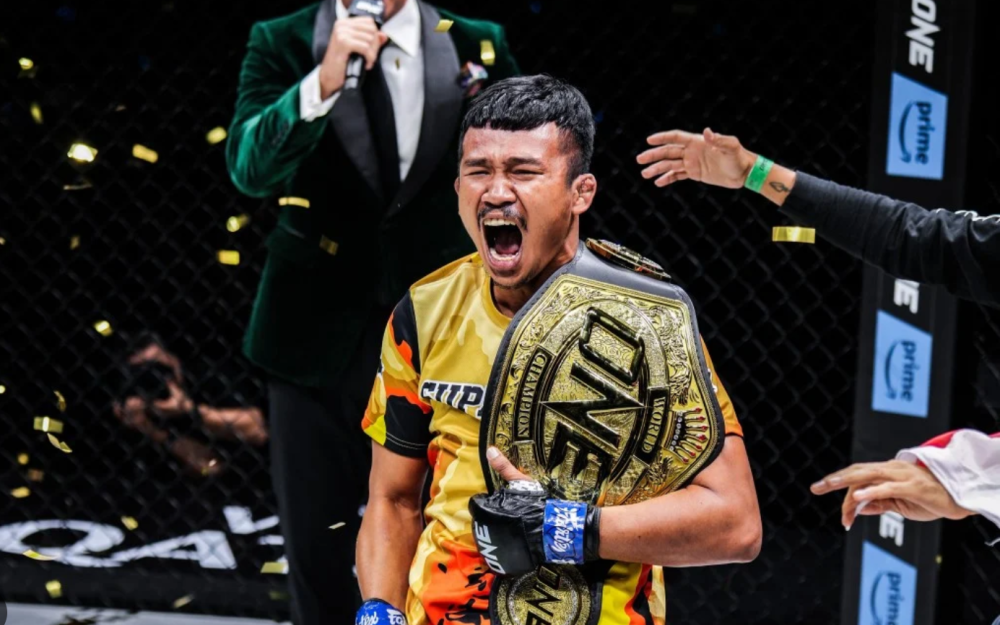
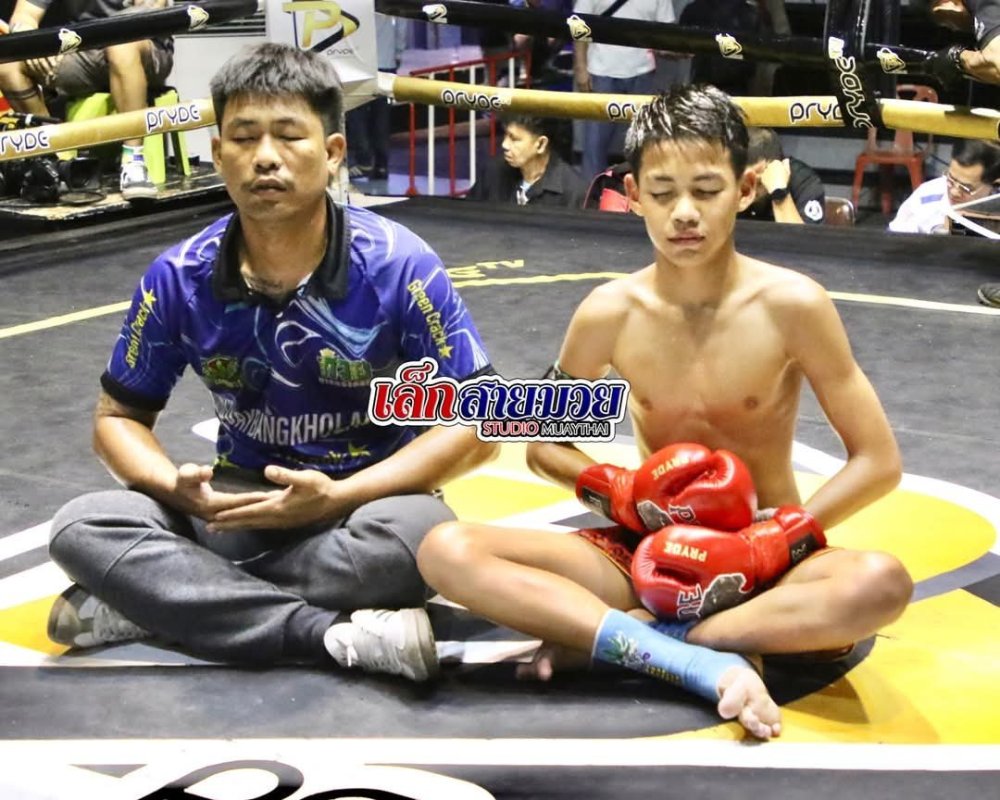


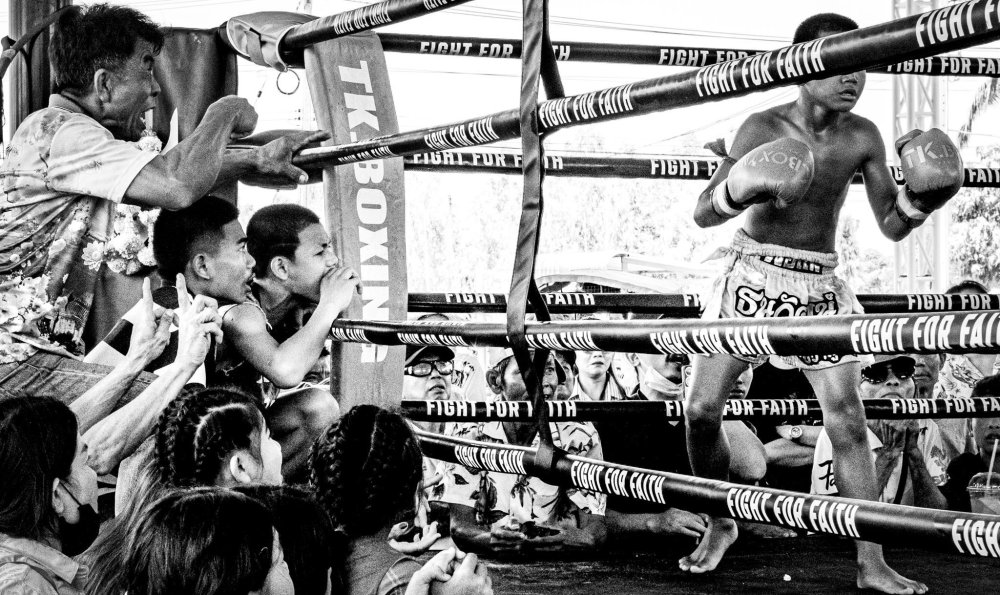
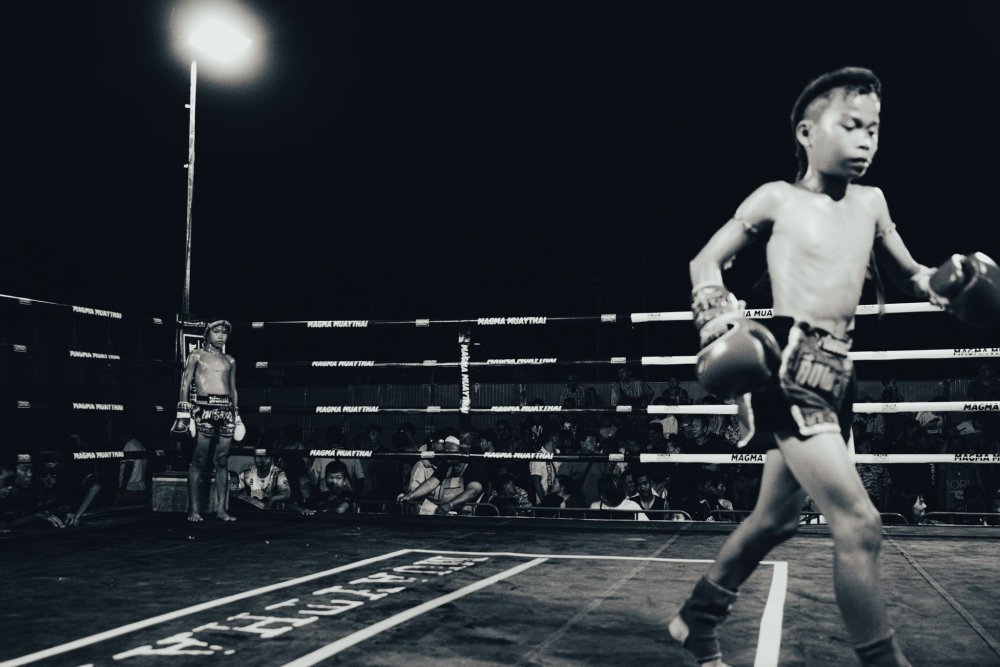
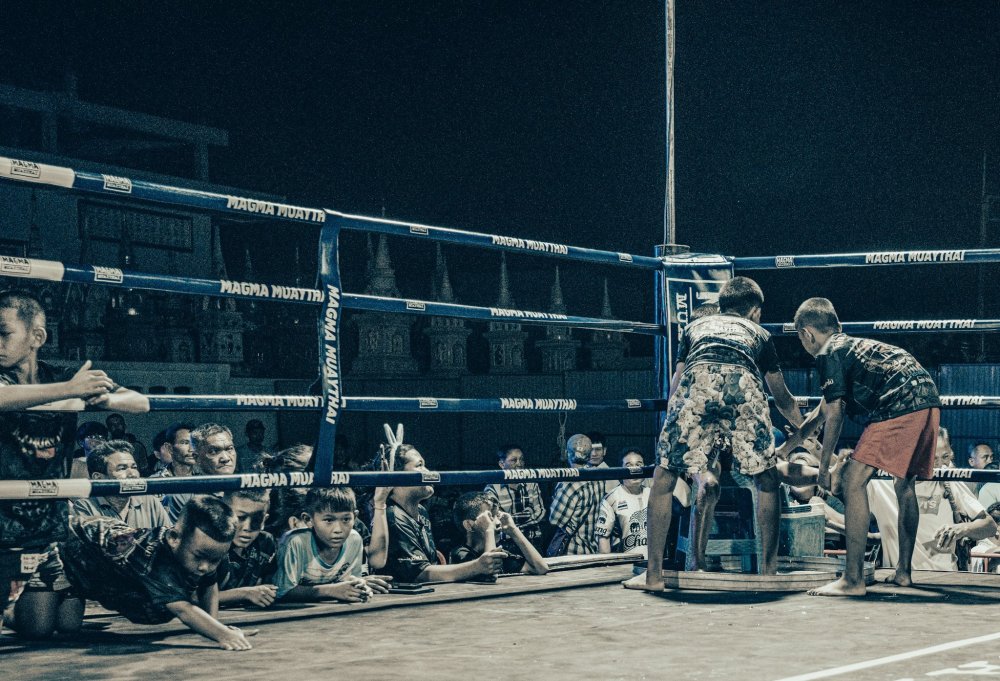
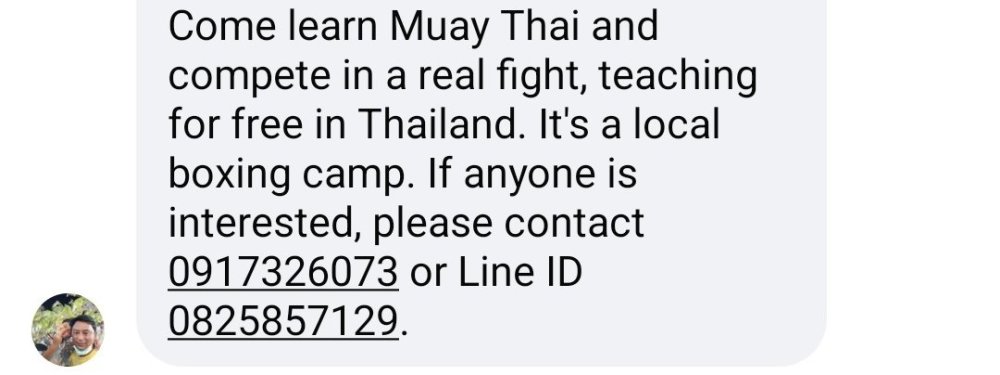
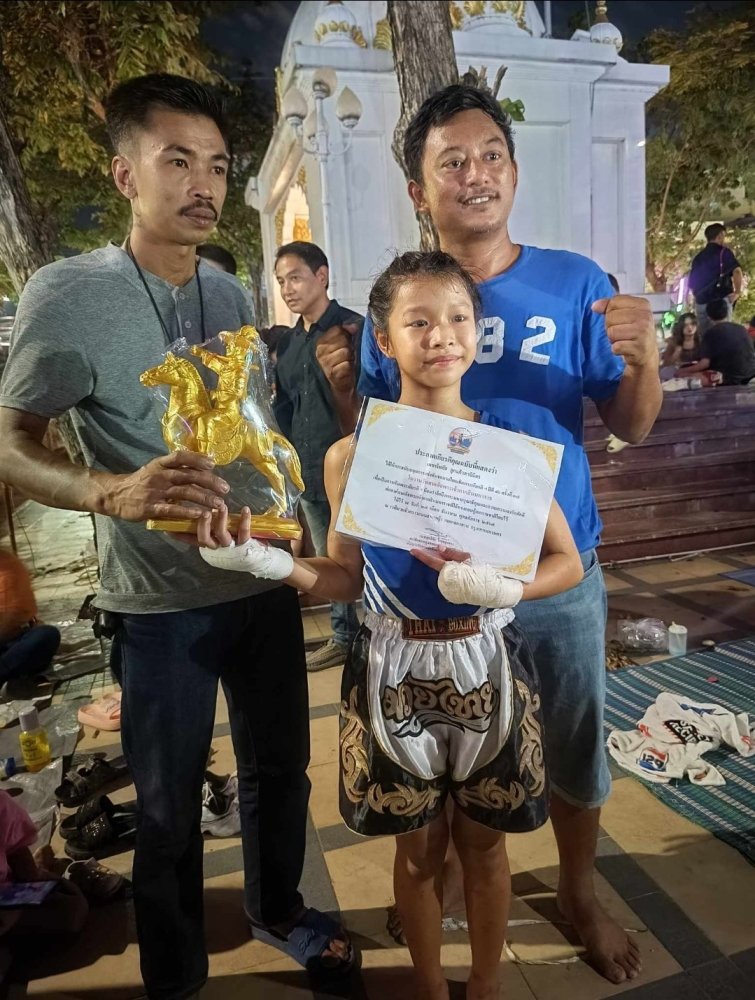
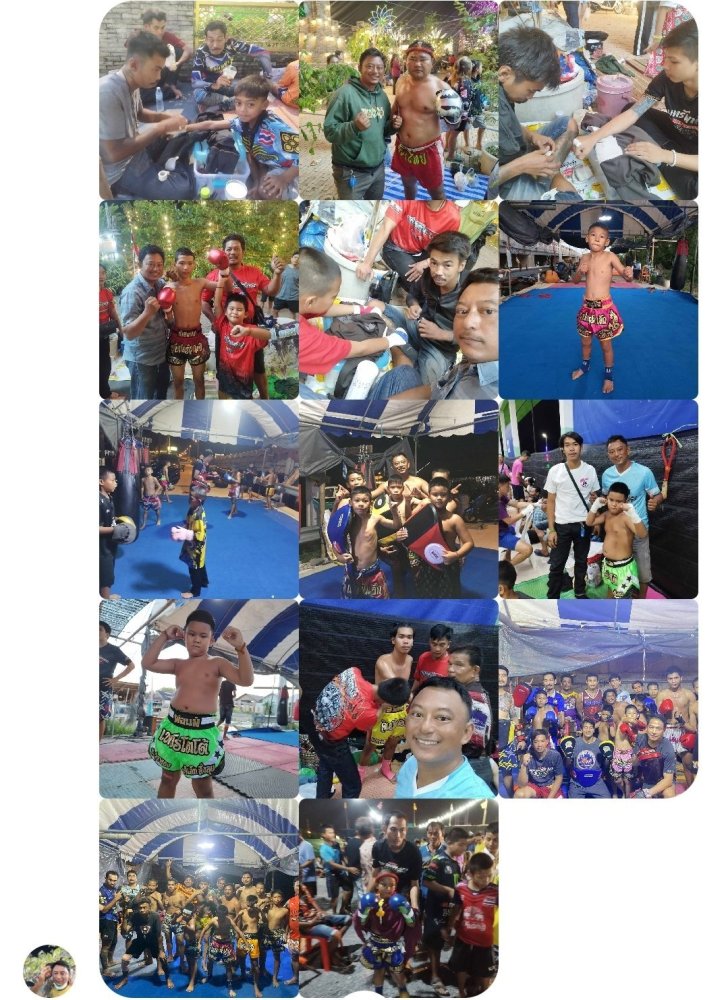
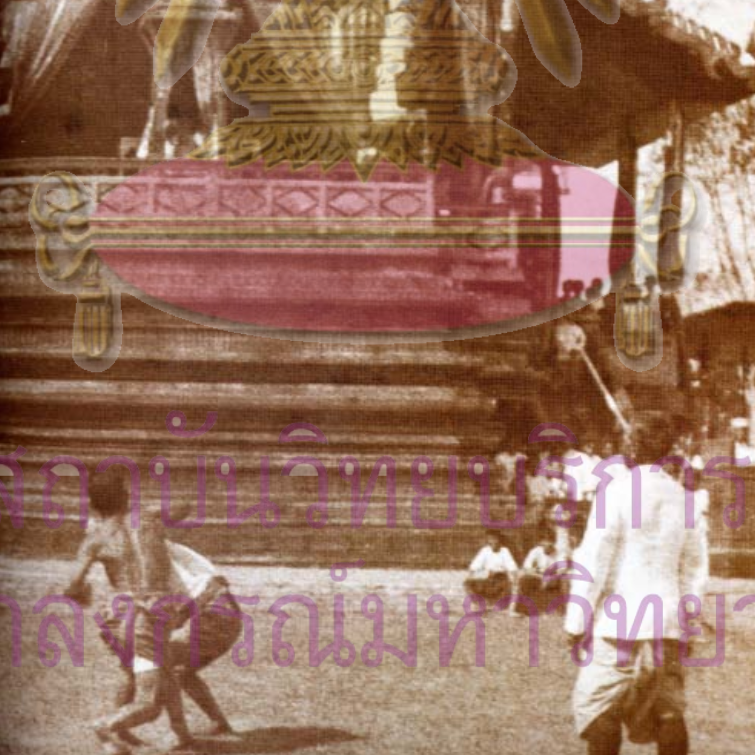

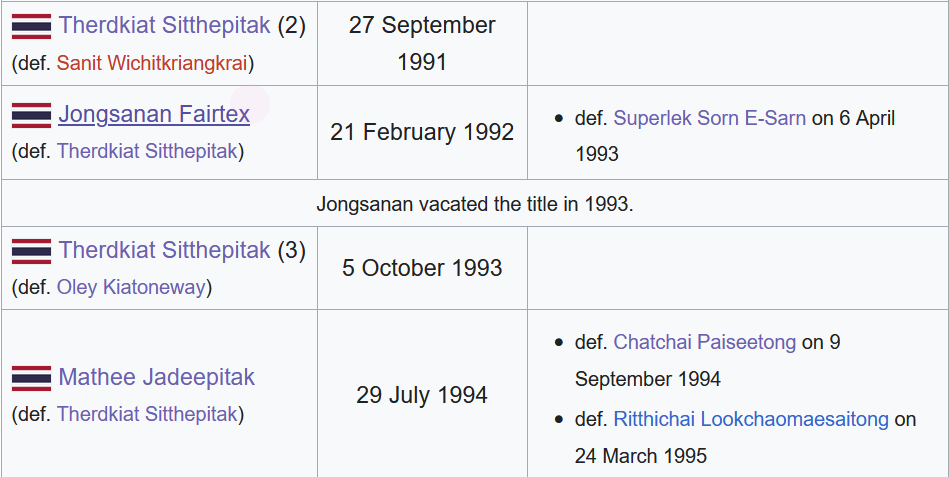
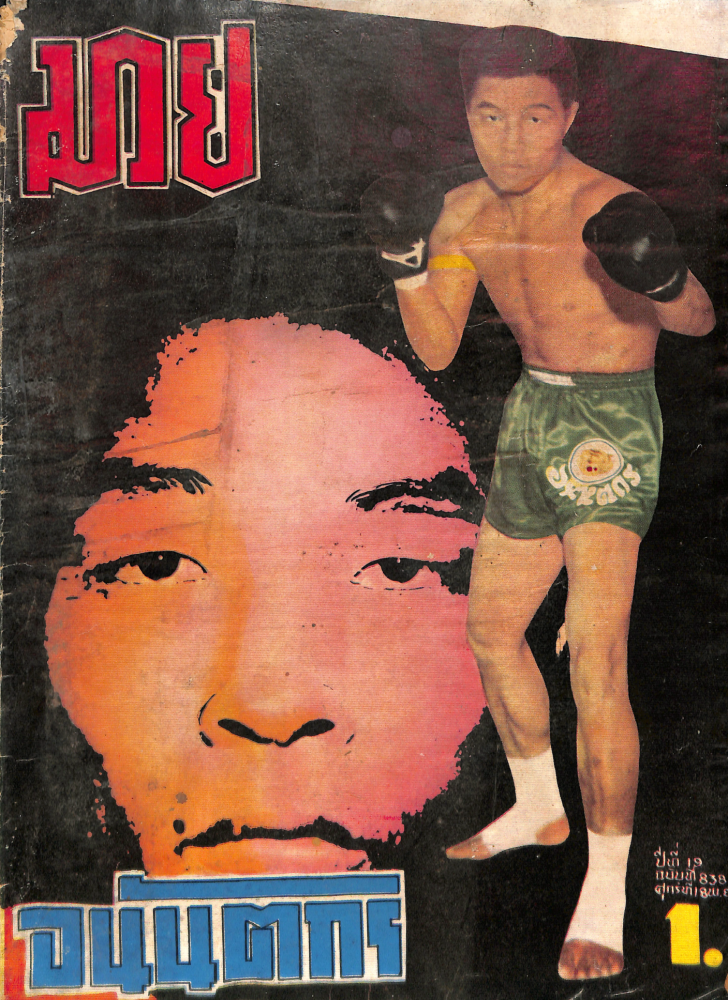
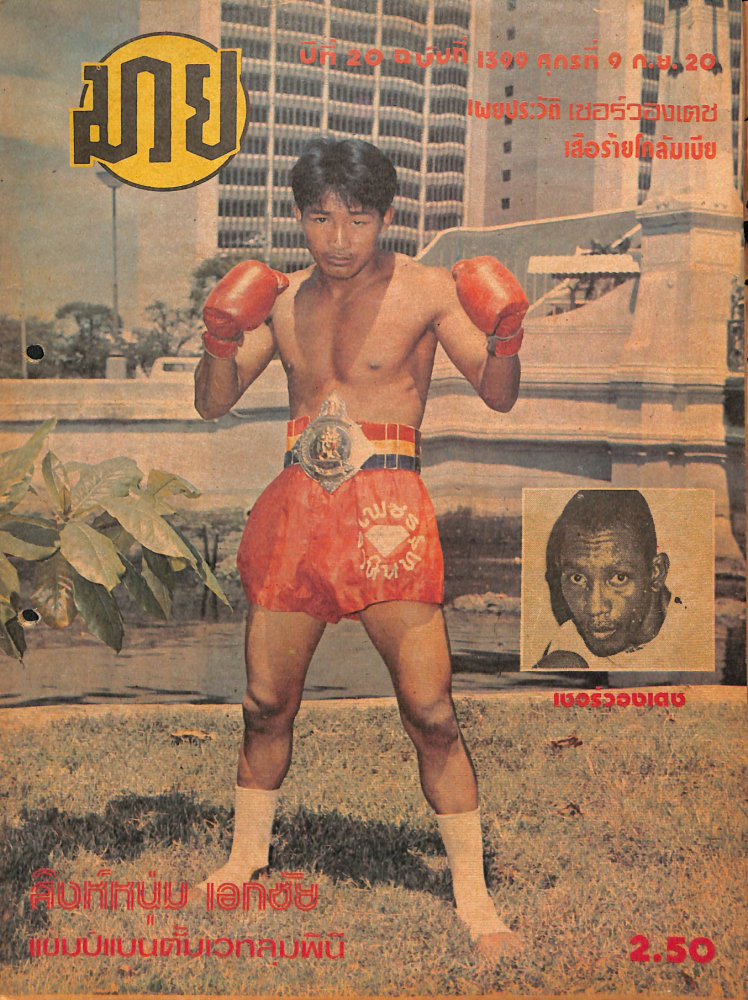
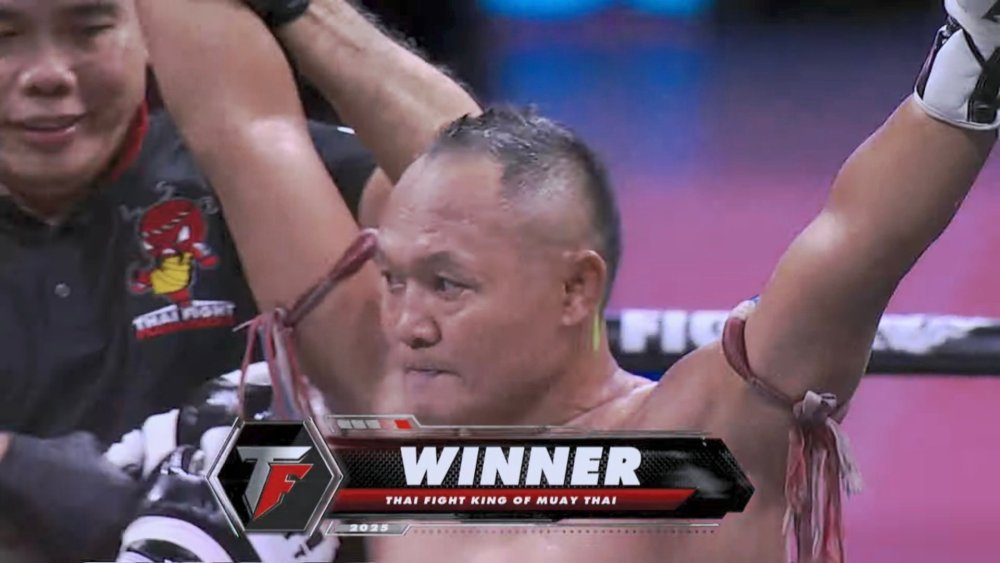
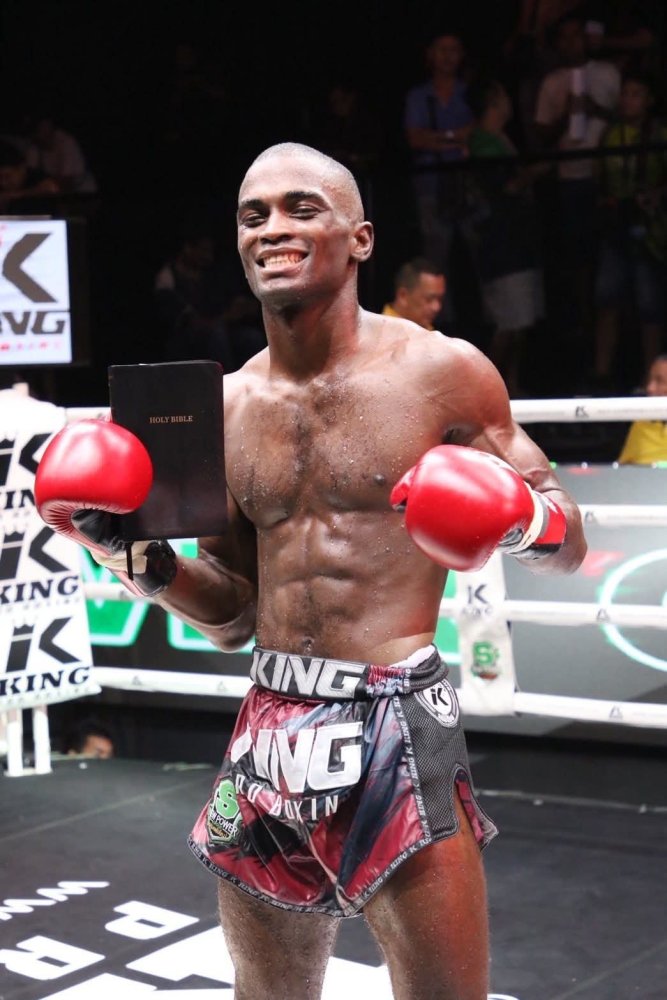
.thumb.png.5f06d27e0aa911e17d9e746c91a86aec.png)
.thumb.png.d5943433772f13869fbd7a45b2531809.png)


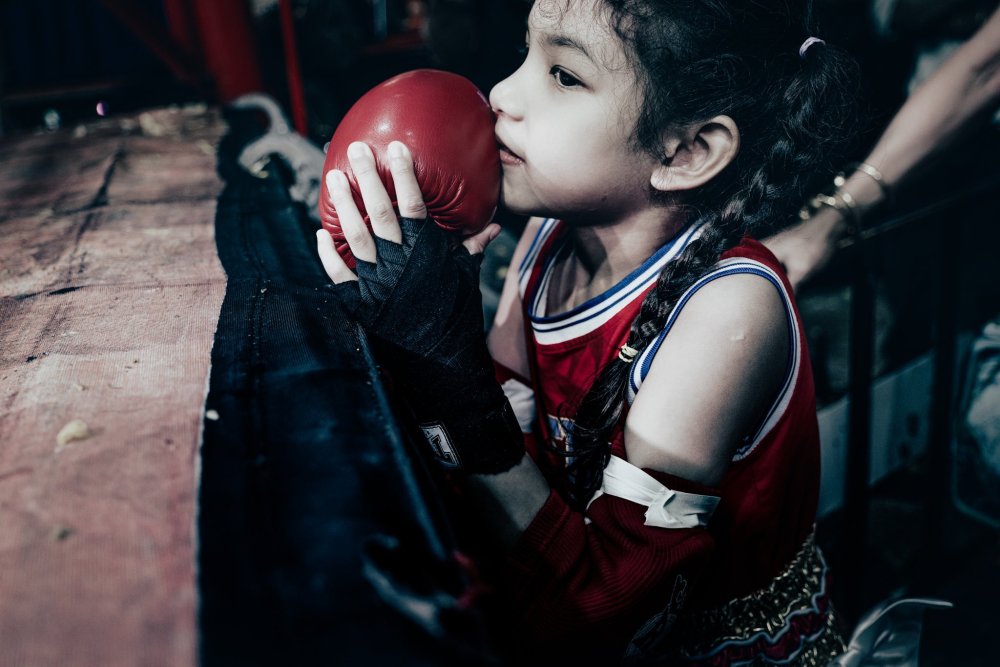
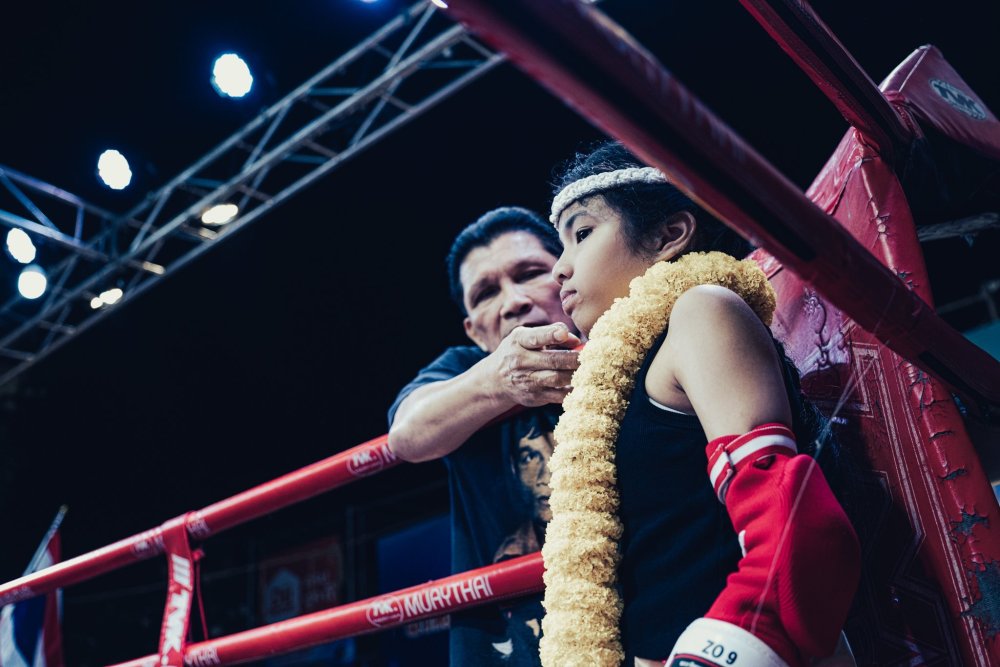
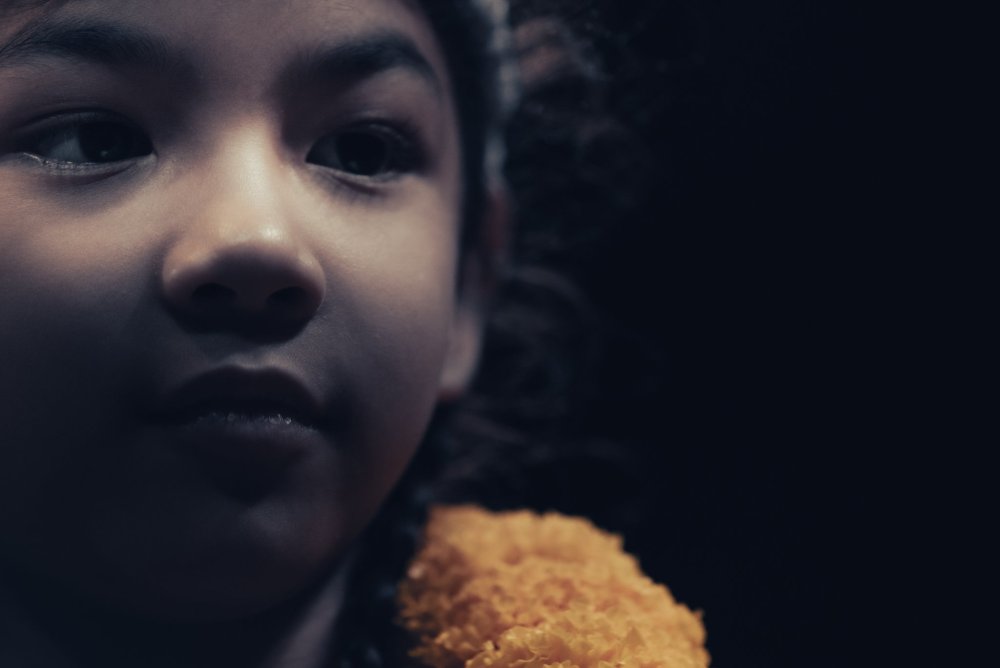
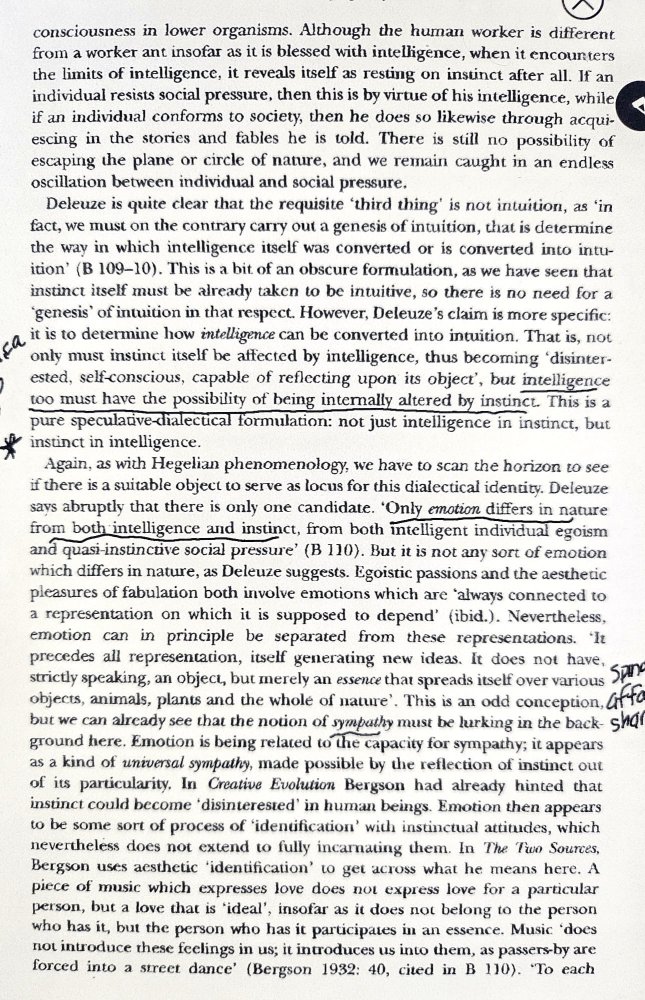
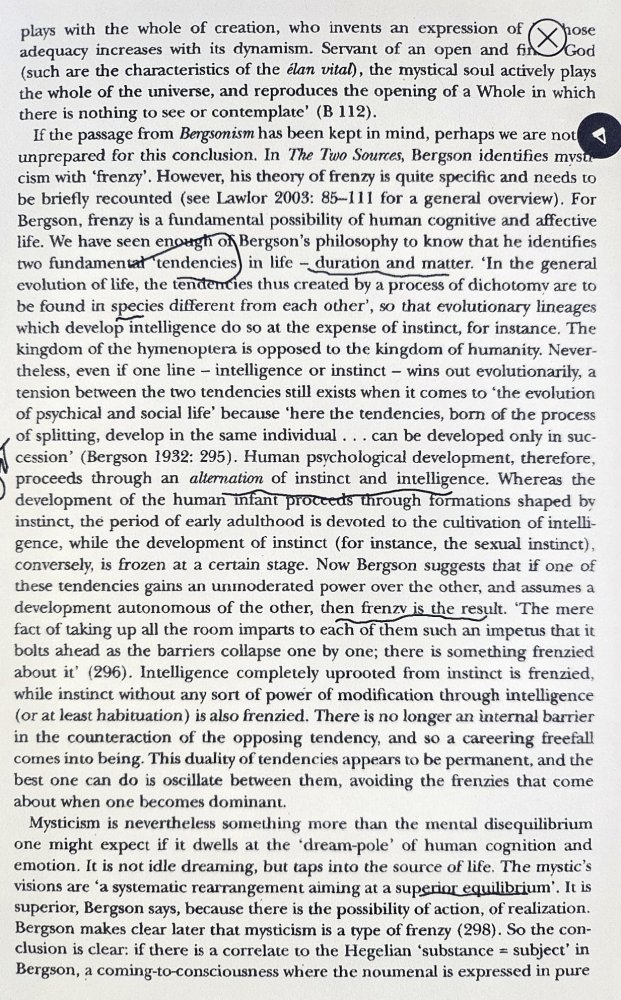
.thumb.jpeg.3d3aab39f52c8c812496637b0ebe6d37.jpeg)

